OSSR: Call of Cthulhu (5.6)
Moderator: Moderators
- Count Arioch the 28th
- King
- Posts: 6172
- Joined: Fri Mar 07, 2008 7:54 pm
Was that one picture from the manga where all the Lovecraft beings are cute anime monster girls?
Cute anime monster girls are a third example of things that make everything better.
Cute anime monster girls are a third example of things that make everything better.
In this moment, I am Ur-phoric. Not because of any phony god’s blessing. But because, I am enlightened by my int score.
- Ancient History
- Serious Badass
- Posts: 12708
- Joined: Wed Aug 18, 2010 12:57 pm
This is one of the things I like about Unknown Armies and Dark Herey's method over Call of Cthulhu's: it has the whole "being crazy innoculates you against going crazy" thing, which means that the people best equipped to save the world are the traumatised survivors. In game design terms it turns a positive-feedback loop (classic Call of Cthulhu) into a negative-feedback loop.TheFlatline wrote:Dark Heresy basically had CoC's sanity mechanic, though I felt that it handled things better. Chaos shit had terror ratings 1-3 generally speaking that inflicted sanity damage, and you could accumulate PTSD sanity damage as well. While the symptoms of rampaging insanity in the game were pretty much CoC tripe, the one thing that I liked is that your insanity rating counted up instead of down, and the 10's digit became your innoculation against shit. Most demons and shit had a terror rating of 1, so once you were fucked up enough in the head and your insanity rating hit 11 you were immune to terror 1 stuff. In-game, the shit outside your head didn't bother you quite so much, because the shit *inside* your head was worse. Of course, to battle great demons and shit without blinking meant you pretty much had to be disconnected from reality to begin with.
Seeing as my game had almost no chaos stuff in it (the big bad guys were smart enough to not deal with chaos, and when they did, it was with the deck severely stacked in their favor), so I ran with sanity being a PTSD thing. You could push yourself to do horrible things and not roll or worry about it. You'd just accumulate some mental scars that would show up... later. It was sort of a credit card system for atrocity. You could either deal with the mental fatigue right then, or you could suppress it and do what was demanded of you and realize you probably were going to have some shitty nightmares for... well... years.
It worked well. If I ever roll back to old school CoC I'll probably approach sanity the same way.
However, even though I prefer this trope for playability reasons, I would argue against including it in a classic Mythos campaign. The genre conventions of Lovecraftian Mythos fiction don't really support the idea that you can become innoculated to the horror, and so if you include it you'll find that the mechanics and mood will grate against one another.
Dark Heresy's madness system, like a lot of its stuff, encapsulates the despair, horror and baroqueness of its setting (albeit unintentionally in some cases.) Like most systems where mechanics are based on fluff rather than vice versa, it ports over to other settings extremely poorly.
I'd argue. The only two people I remember in Lovecraft, who deald with the occult multiple times, are Randolph Carter and Richard Pickman. Carter is a dreamtraveler, a powerful sorcerer and a writer. He stays sane even after meating Nyarlathotep and is a good man. Pickman becomes (willingly?) a ghoul, but is still a kind, rational man. Three wise men of Dunwich fight the spawn of Yog-Sothoth with weapons and magic, and don't seem to be much worse for the wear. Johansen kills the Great Old One with his boat of +10 Cthulhubane, and doesn't go insane (although the rest of the crew does. Not from witnessing Cthulhu, but from prolonged isolation and alien geometries). Gilman has nightmares for some time, after participating in the witch's rituals, but gets better (and gets killed by the witch's familiar). Ammi the farmer battles Color from Another World, and remains sane.Laertes wrote:This is one of the things I like about Unknown Armies and Dark Herey's method over Call of Cthulhu's: it has the whole "being crazy innoculates you against going crazy" thing, which means that the people best equipped to save the world are the traumatised survivors. In game design terms it turns a positive-feedback loop (classic Call of Cthulhu) into a negative-feedback loop.TheFlatline wrote:Dark Heresy basically had CoC's sanity mechanic, though I felt that it handled things better. Chaos shit had terror ratings 1-3 generally speaking that inflicted sanity damage, and you could accumulate PTSD sanity damage as well. While the symptoms of rampaging insanity in the game were pretty much CoC tripe, the one thing that I liked is that your insanity rating counted up instead of down, and the 10's digit became your innoculation against shit. Most demons and shit had a terror rating of 1, so once you were fucked up enough in the head and your insanity rating hit 11 you were immune to terror 1 stuff. In-game, the shit outside your head didn't bother you quite so much, because the shit *inside* your head was worse. Of course, to battle great demons and shit without blinking meant you pretty much had to be disconnected from reality to begin with.
Seeing as my game had almost no chaos stuff in it (the big bad guys were smart enough to not deal with chaos, and when they did, it was with the deck severely stacked in their favor), so I ran with sanity being a PTSD thing. You could push yourself to do horrible things and not roll or worry about it. You'd just accumulate some mental scars that would show up... later. It was sort of a credit card system for atrocity. You could either deal with the mental fatigue right then, or you could suppress it and do what was demanded of you and realize you probably were going to have some shitty nightmares for... well... years.
It worked well. If I ever roll back to old school CoC I'll probably approach sanity the same way.
However, even though I prefer this trope for playability reasons, I would argue against including it in a classic Mythos campaign. The genre conventions of Lovecraftian Mythos fiction don't really support the idea that you can become innoculated to the horror, and so if you include it you'll find that the mechanics and mood will grate against one another.
Dark Heresy's madness system, like a lot of its stuff, encapsulates the despair, horror and baroqueness of its setting (albeit unintentionally in some cases.) Like most systems where mechanics are based on fluff rather than vice versa, it ports over to other settings extremely poorly.
Yeah, the whole "Cthulhu goes 'Boo' and everyone goes gibbering mad" is not really supported in the actual Lovecraft stories (and Frank and AH remark on this upthread). That got created and amplified in the fanbase's echo chamber of the ensuing decades so that now Cthulhu's power level is over 9000. The modern conception of the Mythos has some pretty large deviations from the actual material because that's what happens when the inmates have been running the asylum for so long the fanon starts to become canon by group consensus.
-
Username17
- Serious Badass
- Posts: 29894
- Joined: Fri Mar 07, 2008 7:54 pm
What?Laertes wrote:This is one of the things I like about Unknown Armies and Dark Herey's method over Call of Cthulhu's: it has the whole "being crazy innoculates you against going crazy" thing, which means that the people best equipped to save the world are the traumatised survivors. In game design terms it turns a positive-feedback loop (classic Call of Cthulhu) into a negative-feedback loop.
I'm not really familiar with how Dark Heresy handles sanity, because Dark Heresy handles everything else so poorly that I just stopped caring. But Unknown Armies isn't a feedback loop at all. Your chances of gaining sanity fails are exactly the same no matter how many successes or failures you've rolled on previous mind checks.
Stresses that have a lower rating than your hard ticks don't force rolls, but ones that are higher have no modifier. In the long run, whether you go crazy or not has to do with whether you get X successes before Y failures on your Mind checks. So it reduces down to 4th edition D&D's skill challenge math. A player with a Mind value of a certain threshold is more likely to get hard enough before they lose it, while a player with a mind value below that threshold is more likely to lose it before they get hard enough. And because you're rolling the same check over and over and over again, the chances deviate from 50/50 pretty damn fast as your mind value deviates from the threshold in either direction.
It means that regardless of circumstances, "academic characters" (who have high Mind stats) will not go crazy no matter what they encounter, and specialists in other fields (ie.: those with low Mind stats) will go crazy in any sufficiently long campaign, no matter what they encounter along the way.
Unknown Armies does have a different system to Call of Cthulhu, but it's just differently terrible. It doesn't actually solve any of Call of Cthulhu's problems.
-Username17
What would solve CoC's problems with sanity?FrankTrollman wrote:Unknown Armies does have a different system to Call of Cthulhu, but it's just differently terrible. It doesn't actually solve any of Call of Cthulhu's problems.
Last edited by virgil on Tue Aug 19, 2014 5:40 pm, edited 1 time in total.
Come see Sprockets & Serials
How do you confuse a barbarian?
Put a greatsword a maul and a greataxe in a room and ask them to take their pick
How do you confuse a barbarian?
Put a greatsword a maul and a greataxe in a room and ask them to take their pick
EXPLOSIVE RUNES!
-
Username17
- Serious Badass
- Posts: 29894
- Joined: Fri Mar 07, 2008 7:54 pm
That's complicated, because Call of Cthulhu's insanity system is trying to do three things:virgil wrote:What would solve CoC's problems with sanity?FrankTrollman wrote:Unknown Armies does have a different system to Call of Cthulhu, but it's just differently terrible. It doesn't actually solve any of Call of Cthulhu's problems.
- HP Lovecraft style Despair, where things become too much for characters so they give up and the story ends.
- Traumatic Stress, where people have horrible experiences and that leaves psychological scars.
- Mystical Corruption, where characters exposed to the black arts give up their morality and start murdering people to advance their dark knowledge.
But of course, you could create mechanics to do any or all of those things. I would not say you were wrong to do so. But it's somewhat difficult for me to imagine creating a single hybrid of corruption, trauma, and despair that wasn't a plate full of ass.
-Username17
I agree with Corruption not being necessary. Despair, as you've described, seems like it would work well enough; though an explicit mechanic to work as a roleplaying aid wouldn't be bad, especially for the more existential causes of despair.
Trauma seems like the most important element to abstract into an in-game mechanic, as unnerving players suffers the same flaw as trying to represent actual Evil in games; it's something you want to gloss over because everyone's threshold is different and going over results in there not being a game. That is something I'd like to create in the rules, and if necessary, just call Sanity to give the proper Cthulhian atmosphere.FrankTrollman wrote:You could similarly simply describe horrible things in sufficient detail that the players become unnerved. And finally, players have hardly ever needed incentives to have their characters pursue dark power.
Come see Sprockets & Serials
How do you confuse a barbarian?
Put a greatsword a maul and a greataxe in a room and ask them to take their pick
How do you confuse a barbarian?
Put a greatsword a maul and a greataxe in a room and ask them to take their pick
EXPLOSIVE RUNES!
- Ancient History
- Serious Badass
- Posts: 12708
- Joined: Wed Aug 18, 2010 12:57 pm
Reference
Keeper's Lore

When in doubt, slap some boobs on it.
Musical Offering: In the Depths of R'lyeh - Catacombs
Having finished with the more miscellaneous essays, we now get into a 14 page section of more rules called the Keeper's lore section. It's much denser with rules, opinions, and wallbangers than the rest of the book, so we'll be going over it in more detail than similarly sized chunks of text. This is like the DMG for the game, which at only 14 pages means that most of the suggestions can be summarized as “do whatever the fuck you want, you're the keeper.” One of the interesting things is that this book not only says that players don't need to read the whole book, but that keepers don't need to either. That's some seriously zen shit right there.
So if Call of Cthulhu fans seem rather vague as to what the rules actually say, that is why. The way you're supposed to run the game is by playing it, and then reading it afterward if it seems necessary. Seriously. It says that.
What the book does want you to read are actual books by HP Lovecraft to use as source material and inspiration. The actual rules you can take or leave. Mostly leave, I suppose, what with the book not expecting you to read them in the first place. Players are even encouraged to simply not bring their rulebook to games. On account of Call of Cthulhu being “a simple game to play.” I assume the game is even simpler to play when you haven't read the rules and don't have access to the book.

All of the stories they cite can be found in one book now. Or in the ebook format of your choice. Hell, most of 'em are on the web now that Lovecraft's (mostly) in the public domain.
Amazingly, most of the advice in this section is incredibly low-level and practical, to the point of being trivial or like they were trying to write a GMing article for Better Homes & Gardens. My favorite bit:

I've harped on Medusa's Coil a few times because it's probably the most amazingly offensive of the stories from a racism standpoint. The fact that a sexy lady is part African is literally the horrible reveal at the end. Holy fucking shit. But that story is not on the list of recommended reading. Which is probably fine. I think that story is actually well written other than the fact that it's offensive on the level of Nazi propaganda or child pornography – but it certainly makes sense to quietly pretend it doesn't exist. But here's the thing: it does exist. And really, a lot of other racist passages exist as well. If you're going to tell people to go out and read Lovecraftian horror, you should really take them aside a bit and ease them into the whole part where it's jaw-droppingly offensive by modern standards. Really. You should do that.
Because otherwise it's going to go over like telling someone how much you like Exalted and having them pick up and read The Lunars.
I hate to burst Frank's bubble, but I think the only reason it's not on the list is that none of Lovecraft's collaborations are.
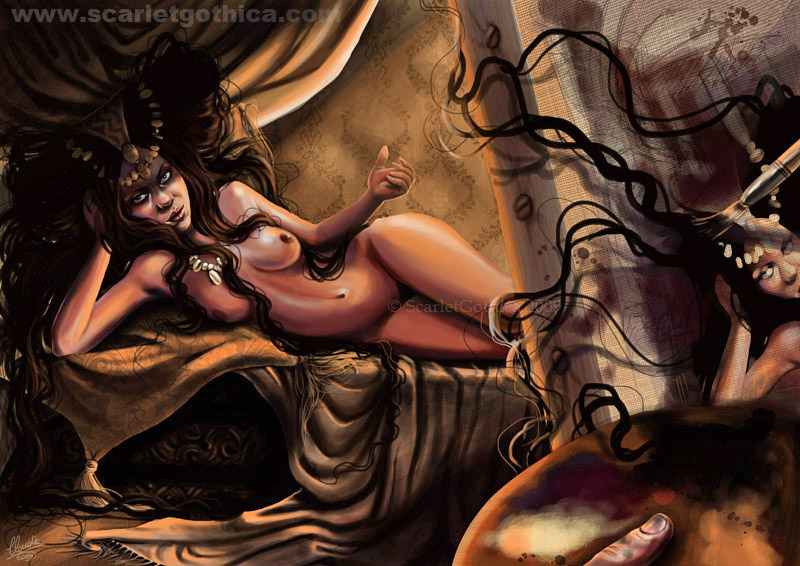
This is seriously an image from the story.
I know we've harped on Lovecraft's racism a couple times, but as long as we're on the general topic of "terrible shit to bring to games," let's talk about female characters.

Originally, Chaosium...didn't do well at catering to this market.

But they got better!
Honestly though, the game mainly...doesn't address female characters, leaving the choice of sex entirely up to the players and not emphasizing the much more sexist nature of the 1920s. That said, it has gotten a little better at depicting female players in the art and text.
But the thing that really sets this apart from like 2nd edition AD&D is that in addition to constantly reminding you that the MC can ignore or change any rule at any time for any reason or no reason at all, is that it literally makes fun of you for wanting a functional ruleset. Heck, it makes fun of you for wanting there to be rules in the rulebook.

Most of the advice and examples in this section are how to create adventures, and by linking adventures together, campaigns. The rest of it is about running games and fucking over players. I wish I was kidding about that. There's seriously a whole section called "Relying on Possessions" which says players should bleed for every new piece of equipment or spell or whatever that they get/want.
What you really get in this section is the impression of someone trying to impose a certain style of play, sort of in a proto-World of Darkness manner. We usually expect games like D&D to be at least nominally balanced in the numbers, but CoC is so hilariously unbalanced that approaching it from the standpoint of "I have enough X to do Y" is seen as disturbingly against the character of the game.
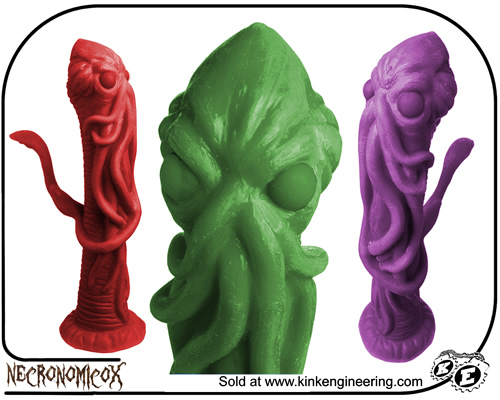
These are exactly what they appear to be.
This being the equivalent of a really abridged DMG, there are of course discussions of how to structure a story and an example plot. The metaphor of choice is that of an onion. That the story should unfold as the peeling of an onion: each layer revealed being more horrible and overtly supernatural. Not bad advice, in abstract. Certainly, you can do supernatural horror that way.

...and I'm all out of bubblegum.
The author sort of loses me when he attempts to explain this idea with the Case of Charles Dexter Ward. It's not really set up like that, to be honest. And the way the book describes it fits into the attempted paradigm even less well. For starters, he talks about two different onions (one for the adventures of Charles and one for the adventures of Dr. Willett). But really, it's not really onionesque. So I'm not sure what the point of that example is supposed to be. Considering that The Call of Cthulhu is actually in three parts of increasing tempo and batshittery, and used as the opening fiction and the title of the book, that probably would have been a better choice as an example of onion-style storytelling. But maybe the author is just bad at literary critique.
There is then a piece on “building a scenario,” which describes a typical adventure as a five paragraph essay of: setup, hook, clues, confrontation, resolution (but obviously with a lot more rambling text). Also not a bad format for an adventure (especially for short adventures), but then the book claims this is an example of an onion-style storytelling, when it very obviously fucking isn't. So who the fuck knows what these guys are babbling about?
One thing you will notice a general lack of in Lovecraft's fiction is the idea of a "party." Usually you have one, maybe two people that investigate any given mystery; "The Dunwich Horror" is the exception, and even that is mainly Armitage until the very end. So pretty much by definition, your average game of Call of Cthulhu is not going to play through like a Lovecraft story come to life...and this is usually where the trouble starts: trying to figure out why all the players characters are gathered together in the first place. This section really doesn't address that very well, and while other games like Bookhounds of London or Delta Green have presented a bit of pretext, there's no sort of generic scheme or conceit set up where you've come together as a team of paranormal investigators or anything.
Die rolls add drama!
I'm not sure if they do or not, but I am sure that if all you're rolling dice for is to create a sense of confusion in the players, there are probably more surreal ways to achieve that goal. And definitely more fair ways to use dice. The overt contempt this game has for actually playing it as a game is alternately puzzling and infuriating.
Much should be said about the “A Great Reluctance” speech. It's a special rant about how keepers should not let players have access to big guns or powerful spells because you're just going to kill their characters anyway and when you have a really big hammer everything looks like a nail.

This is, honestly, really fucked up. When you repeatedly murder peoples' characters, of course they are going to try to fight back against that with proverbial (or actual) bigger guns. And when you kill their characters again, they are going to want bigger guns, and so on. The only way this cycle ever breaks is if you either let the players win, or the players wise up and figure out that you're a whack MC who is just trolling them.

Are you sure this is how you summon Cthulhu?
Longer than the other mini-essays is the rant about how you should use florid language and eschew using terminology consistently so as to avoid inadvertently telling your players what something actually is or does. Spells and monsters and shit have names in the game that are taken directly from books in the setting, but you're not supposed to use those names as a keeper, because the players read these books too and possiprobably know what a shantak is. There is certainly a case to be made for this sort of behavior, but I think this section clearly takes it too far. It goes out and says that when you can't think of something, you should just say a word and let that hang ominously in the air while you attempt to overcome your writer's block. Hopefully you'll think of something scary to say before the players get bored and start cracking jokes.

Sort of tailing on the whole "why doesn't somebody mass-produce the Necronomicon?" is "why doesn't somebody photograph the Mythos?" This is usually mindcaulked away in games, but in Lovecraft's fiction there is evidence - if you have eyes to look for it and put the pieces together - but usually the inescapable evidence decays shortly after the monster dies, or is covered up by cults or civic authorities. This section sortof addresses that in a tangential manner by talking about how to handle alien entities, especially when they die.
A Keeper's Toolkit

We're still in the Keeper's Lore section, but page 124 is called out as being its own thing in the table of contents, so we'll go with it. Basically, this is a set of secret rules that are for the Keeper to know and you to not know. Or more accurately, for the Keeper to possibly know, and you to not know – since after all the Keeper is expected to merely skim this section to reduce the chance of sanity loss. These aren't mostly obscure things that probably won't come up, there are seriously basic die mechanics in here. They are not the same as the die mechanics listed elsewhere.
Let's jump right into the deep end: Criticals and Fumbles. The rest of the book tells you that a natural 00 is a fumble. Well, some of it doesn't mention fumbles and merely tells us that a natural 00 is a failure, but where it mentions fumbles, it does so for the natural roll of 00. These secret rules expand that to 96, 97, 98, and 99. So if you read the player section and the keeper reads the keeper section, you can roll a result that you think is a normal failure and the keeper thinks is a fumble. And in the example of play, players were reporting only success or failure on a lot of their die rolls, so I have no fucking idea how that is supposed to work. Note also that while fumbles may start at 96, skills go up to 99%. So it's entirely possibly for a roll to be both a fumble and a success, and I have no idea how that's supposed to work either.
Then there's critical success. As I've harped on before, the book describes a special case state called “Impale” which is a kind of critical success which occurs when you roll under 1/5th of what you need to roll to succeed in the first place (yay for doing division in the middle of task resolution), and alternately tells you that this only applies during combat with attacks using thrusting weapons and that the keeper should apply it to other die rolls that roll comparably well. Well, just to make it so that there are more than two possible answers, page 124 (and only page 124, not any of the earlier or later pages) has a completely different set of criteria for critical success on a roll, which is any roll of 01-05. Remember again that the example of play just had players reporting things like “I succeed” after having rolled dice, so I have no idea how secret critical success thresholds are supposed to be implemented. Note that even on the next page, we are told again that the marvels of extraordinary success should be handed out for rolling less than 1/5th the literal skill, which is called a “special” result. So this whole 1 in 20 chance of scoring a critical seems to be like a minority report or legacy artifact from a different system or edition.

No idea.
There is then some rumination on implementing partial success by having people roll one set of dice and comparing the results to multiple skills. Note that partial success in this manner is only possible if your literal result lands between the two skill values, and it tells you to choose skills that are “relatively equal in percentiles,” which seems to undermine the whole operation. If two skills differ by only 5%, then obviously you only have a 5% chance of getting a partial success.
Special note should be made of the mini-essay “Control of the Game,” which suggests that sometimes Call of Cthulhu games can fall apart (as all RPGs, and indeed all social gatherings can), and suggests that the likely reason for this is the keeper paying too much attention to the rules. This breaks my fucking mind. After spending virtually the entire book so far explaining that in nearly twenty years they hadn't really bothered
finishing the rule set, and you should probably just wing it for pretty much everything, they think a key problem remaining in the game might be that there are too many rules? What the hell? How could that even be on the map of things that might be worth discussing?
Homerules and generating your own material for games (what a novel concept!) are sort-of addressed in a section on "Creating a Skill" - which is about adding a new skill (or an old skill that might have been abolished in a previous edition like, I dunno, fucking Alchemy or something) you can totally do that, just get the players and keeper to sign off on it so everybody knows what the fuck is going on.
The specific example of this given is the Hypnosis skill, which is marked as optional. Hypnosis is one of those quasi-real, quasi-pulp skills that people like to cram into games so they can play The Shadow or whatever.
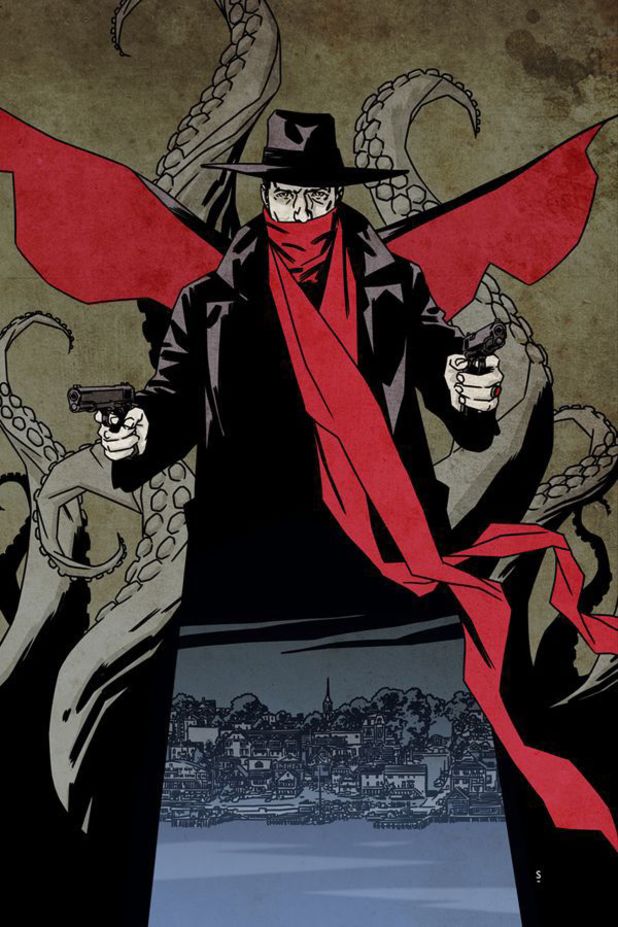
I've been waiting to use this.
I'm not against it...but it's about as "realistic" as having an Animal Ken skill that let's you go Crocodile Dundee beastmaster on roving cattle and shit.
The game floats the idea that you might want to use different character generation rules than those given earlier in the books. That's pretty much it, there's no real discussion of what that would actually mean or what the connotations might be. There is also a discussion of how you might want to add new skills – or to use skills that appeared in earlier editions of the game and no longer exist in this edition. Because you know, whatever.

It's actually Lynn Willis' United States of Whatever.
What's really missing here is the idea that if you add skills you are diluting the amount of skill points that players have. This in turn means that they have less capabilities and have to choose to be able to do less things or to be able to do the things they can do less well. The fact that the great proliferation of combat skills leads directly to the actual players of the game turning into low-rent superheroes with signature weapons that they carry with them everywhere they go seems to be a very great indictment of the skill proliferation concept. But the author doesn't seem to have noticed that this is going on. Possibly because every time someone presented evidence of this fact to him, he simply stamped his foot and said they were playing the game wrong.
Because when the sanity rules emergently caused players to avert their eyes from horrible monsters, that's proof that the game is working. But when the skill rules emergently cause players to put backup swords in their cars, their homes, and every suit of clothing and to never ever go anywhere without access to several backup swords – that's a failure of the players. Or something.
At about the time you get to the bit on "Spell Multipliers," you realize that this is the Grandma's Attic of the game, where a bunch of stuff that was deliberately thrown out of previous editions is presented here just to please the grognards that don't think this edition is a True Scotsman Call of Cthulhu game.

Not to be confused with Wizard's Attic. For a time in the 90s Wizard's Attic was a spin-off that served as the online retailer for Chaosium, and famously started to just not ship out orders even though it cashed people's checks. Terrible details here.
Anyway, the idea with a spell multiplier is that when you read a Mythos tome, you had INT x (Spell Multiplier) chance of learning a given spell in there. Typically multipliers were usually around 3.
The section on “Surviving or Dying” is actually about appropriate challenges for teams of investigators. This book seems to think you should provide some, even going so far as to read through adventures you are considering running to make sure it's an appropriate challenge for the team you have. This game has no challenge ratings or power levels, and none of the mechanics are set in stone. I have no idea how the author thinks this is to be accomplished.

This section also expounds on how characters can get serious injuries that lower their stats or skills. But that all seems to be MTP. Apparently the keeper can just announce that you got a facial scar and now permanently have a lower credit rating. That sounds like me making fun of this book, but it's literally the example.
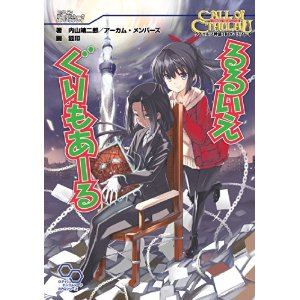
Scream of Kachooloo.
The Civil Authority subsection is mostly about how the cops can go full Ferguson on your ass for any reason or no reason at all because it's the 1920s and what does Due Process mean? It's also a section about how if investigators talk about the shit they are doing with their outside voices, they can get committed to an Insane Asylum. You don't get response times or historical police manpower numbers or anything that might be useful, it really is just a list of reasons the cops might arrest you. But since it starts with the fact that the cops can arrest you for “looking suspicious,” the rest of it doesn't even matter.

Move along, citizen.
We already had a sanity loss guide table, back when we discussed sanity rules, but here we have it...again...in sort of greater depth...by which I mean, using more flavors of dice, and presenting some accompanying descriptors.
The final bit is a rant about tournament games. I... can't even pretend to care. This game is basically Calvinball, I have no idea what a “tournament” would mean or prove.

So that's the DMG portion of the game. Next up, we get into the monster manual. Honestly, if you had shown me this section and the “rules” section separately, I would have bet real money that they were written for entirely different editions of the game. The fact that basic die mechanics are treated differently would have been the big give-away on that score. That it isn't so just causes me san loss.
Honestly, I don't care about tournaments either, but last investigator standing does mean a few things. As I mentioned earlier, going permanently or indefinitely insane doesn't mean your character dies, but it does take them out of play for a while, so we get a too-brief look at some of the niceties surrounding asylums...which is all too brief, really, considering how much of this game is played in and around asylums.

Where did you think this place came from?
Anyway, next up: Creatures!
Keeper's Lore

When in doubt, slap some boobs on it.
Musical Offering: In the Depths of R'lyeh - Catacombs
FrankT:
Having finished with the more miscellaneous essays, we now get into a 14 page section of more rules called the Keeper's lore section. It's much denser with rules, opinions, and wallbangers than the rest of the book, so we'll be going over it in more detail than similarly sized chunks of text. This is like the DMG for the game, which at only 14 pages means that most of the suggestions can be summarized as “do whatever the fuck you want, you're the keeper.” One of the interesting things is that this book not only says that players don't need to read the whole book, but that keepers don't need to either. That's some seriously zen shit right there.
So if Call of Cthulhu fans seem rather vague as to what the rules actually say, that is why. The way you're supposed to run the game is by playing it, and then reading it afterward if it seems necessary. Seriously. It says that.
Keeper's Lore wrote:The present chapter is background – play first, then thumb through here as convenient.

What the book does want you to read are actual books by HP Lovecraft to use as source material and inspiration. The actual rules you can take or leave. Mostly leave, I suppose, what with the book not expecting you to read them in the first place. Players are even encouraged to simply not bring their rulebook to games. On account of Call of Cthulhu being “a simple game to play.” I assume the game is even simpler to play when you haven't read the rules and don't have access to the book.
AncientH:
Titles with asterisks are longish, up to novelette in length.

All of the stories they cite can be found in one book now. Or in the ebook format of your choice. Hell, most of 'em are on the web now that Lovecraft's (mostly) in the public domain.
Amazingly, most of the advice in this section is incredibly low-level and practical, to the point of being trivial or like they were trying to write a GMing article for Better Homes & Gardens. My favorite bit:
Ye fucking gods of R'lyeh, I always counted myself lucky if players showed up with a pulse and pants.Expect players to bring their own investigators, copies of the rules if they want them, their own dice, and any miniature figures they want to play with in the game. People who bring all of that usually bring their own writing materials as well. Pencil erasers sometimes wear to nubs in half an hour--a large, fresh gum eraser can be very helpful.

See? Secret rolls. I told you about that shit. Not mentioned anywhere previously in the book.Most keepers like to look over investigator sheets before play begins. The idea behind this inspection is not to allow the keeper to construct the hardest possible situations, but to see if any of the crucial situations in the play to come will be unduly hard or easy for the group to overcome. If no problem jumps out at the keeper, the player should be not much concerned. Having said this, though, it can be useful to photocopy the sheets so that a roll can be made in secret now and then, or so that the shreds of somebody's sanity can be considered.
FrankT:
I've harped on Medusa's Coil a few times because it's probably the most amazingly offensive of the stories from a racism standpoint. The fact that a sexy lady is part African is literally the horrible reveal at the end. Holy fucking shit. But that story is not on the list of recommended reading. Which is probably fine. I think that story is actually well written other than the fact that it's offensive on the level of Nazi propaganda or child pornography – but it certainly makes sense to quietly pretend it doesn't exist. But here's the thing: it does exist. And really, a lot of other racist passages exist as well. If you're going to tell people to go out and read Lovecraftian horror, you should really take them aside a bit and ease them into the whole part where it's jaw-droppingly offensive by modern standards. Really. You should do that.
Because otherwise it's going to go over like telling someone how much you like Exalted and having them pick up and read The Lunars.
AncientH:
I hate to burst Frank's bubble, but I think the only reason it's not on the list is that none of Lovecraft's collaborations are.

This is seriously an image from the story.
I know we've harped on Lovecraft's racism a couple times, but as long as we're on the general topic of "terrible shit to bring to games," let's talk about female characters.
This isn't quite accurate, but it's a very common view of Lovecraft: that in addition to being prejudiced against race, he was prejudiced about women as well. The reality is more complicated - he had a number of female revision clients and friends, and a fair number of female characters - but it is generally true to say that Lovecraft had few female protagonists, didn't tend to focus on romantic relationships, and eschewed many of the female stereotypes of his day. So where does this leave female Call of Cthulhu players, or players that want female Call of Cthulhu characters?Whether it was a symptom of the time he lived in, or a personal choice, Lovecraft rarely included positive female characters in his stories. Asenath Waite, from “The Thing on the Doorstep” was actually an evil old man wearing a girl’s body like a suit, and his other major female character, Lavinia Whateley from “The Dunwich Horror” was merely a servant of a greater evil. Lovecraft usually limited his women to a mention that the main character had a wife, one who faded from the story a sentence or two later. To be fair, Lovecraft didn’t just limit female sexuality—none of his characters are romantic or sexual either. He simply left it out. We don’t want to only expand the role of the female in the mythos, we also want to include a spectrum of gender and sexuality models, to better reflect today’s society. (“WNW talks with Carrie Cuinn, the woman behind the Cthulhurotica anthology”)

Originally, Chaosium...didn't do well at catering to this market.

But they got better!
FrankT:
This is from Call of Cthulhu's formulation of Rule Zero called “Keeper's Choice.” It not only tells you that the keeper can change any rule as he likes, but that these decisions have “no ramifications.” I don't really know what they mean by that, because obviously the keeper making choices about how to handle life or death scenarios for the investigators has ramifications. I think what they are trying to get across is that a keeper in Call of Cthulhu isn't even supposed to keep their arbitrary rulings consistent. You know, just whatever, man.Keeper's Choice wrote: “Oh, no,” you think, “I wanted rules!”
But the thing that really sets this apart from like 2nd edition AD&D is that in addition to constantly reminding you that the MC can ignore or change any rule at any time for any reason or no reason at all, is that it literally makes fun of you for wanting a functional ruleset. Heck, it makes fun of you for wanting there to be rules in the rulebook.

AncientH:
Most of the advice and examples in this section are how to create adventures, and by linking adventures together, campaigns. The rest of it is about running games and fucking over players. I wish I was kidding about that. There's seriously a whole section called "Relying on Possessions" which says players should bleed for every new piece of equipment or spell or whatever that they get/want.
What you really get in this section is the impression of someone trying to impose a certain style of play, sort of in a proto-World of Darkness manner. We usually expect games like D&D to be at least nominally balanced in the numbers, but CoC is so hilariously unbalanced that approaching it from the standpoint of "I have enough X to do Y" is seen as disturbingly against the character of the game.

These are exactly what they appear to be.
FrankT:
This being the equivalent of a really abridged DMG, there are of course discussions of how to structure a story and an example plot. The metaphor of choice is that of an onion. That the story should unfold as the peeling of an onion: each layer revealed being more horrible and overtly supernatural. Not bad advice, in abstract. Certainly, you can do supernatural horror that way.

...and I'm all out of bubblegum.
The author sort of loses me when he attempts to explain this idea with the Case of Charles Dexter Ward. It's not really set up like that, to be honest. And the way the book describes it fits into the attempted paradigm even less well. For starters, he talks about two different onions (one for the adventures of Charles and one for the adventures of Dr. Willett). But really, it's not really onionesque. So I'm not sure what the point of that example is supposed to be. Considering that The Call of Cthulhu is actually in three parts of increasing tempo and batshittery, and used as the opening fiction and the title of the book, that probably would have been a better choice as an example of onion-style storytelling. But maybe the author is just bad at literary critique.
There is then a piece on “building a scenario,” which describes a typical adventure as a five paragraph essay of: setup, hook, clues, confrontation, resolution (but obviously with a lot more rambling text). Also not a bad format for an adventure (especially for short adventures), but then the book claims this is an example of an onion-style storytelling, when it very obviously fucking isn't. So who the fuck knows what these guys are babbling about?
AncientH:
One thing you will notice a general lack of in Lovecraft's fiction is the idea of a "party." Usually you have one, maybe two people that investigate any given mystery; "The Dunwich Horror" is the exception, and even that is mainly Armitage until the very end. So pretty much by definition, your average game of Call of Cthulhu is not going to play through like a Lovecraft story come to life...and this is usually where the trouble starts: trying to figure out why all the players characters are gathered together in the first place. This section really doesn't address that very well, and while other games like Bookhounds of London or Delta Green have presented a bit of pretext, there's no sort of generic scheme or conceit set up where you've come together as a team of paranormal investigators or anything.
FrankT:
Die rolls add drama!
I'm not sure if they do or not, but I am sure that if all you're rolling dice for is to create a sense of confusion in the players, there are probably more surreal ways to achieve that goal. And definitely more fair ways to use dice. The overt contempt this game has for actually playing it as a game is alternately puzzling and infuriating.
Much should be said about the “A Great Reluctance” speech. It's a special rant about how keepers should not let players have access to big guns or powerful spells because you're just going to kill their characters anyway and when you have a really big hammer everything looks like a nail.

This is, honestly, really fucked up. When you repeatedly murder peoples' characters, of course they are going to try to fight back against that with proverbial (or actual) bigger guns. And when you kill their characters again, they are going to want bigger guns, and so on. The only way this cycle ever breaks is if you either let the players win, or the players wise up and figure out that you're a whack MC who is just trolling them.
AncientH:
I'm not sure why this is here. It''s sort of weird, isn't it? You would expect that perhaps this would be back by the spells or the magic rules. You might even expect that the person who wrote it would read it twice, and then maybe go add some more details to spells, or possibly an example, but that doesn't happen.Details can be added to spells, to considerable effect, since the rulesbook little describes the spells and usually leaves the evidence of their casting up to the keeper.

Are you sure this is how you summon Cthulhu?
FrankT:
Longer than the other mini-essays is the rant about how you should use florid language and eschew using terminology consistently so as to avoid inadvertently telling your players what something actually is or does. Spells and monsters and shit have names in the game that are taken directly from books in the setting, but you're not supposed to use those names as a keeper, because the players read these books too and possiprobably know what a shantak is. There is certainly a case to be made for this sort of behavior, but I think this section clearly takes it too far. It goes out and says that when you can't think of something, you should just say a word and let that hang ominously in the air while you attempt to overcome your writer's block. Hopefully you'll think of something scary to say before the players get bored and start cracking jokes.

AncientH:
Sort of tailing on the whole "why doesn't somebody mass-produce the Necronomicon?" is "why doesn't somebody photograph the Mythos?" This is usually mindcaulked away in games, but in Lovecraft's fiction there is evidence - if you have eyes to look for it and put the pieces together - but usually the inescapable evidence decays shortly after the monster dies, or is covered up by cults or civic authorities. This section sortof addresses that in a tangential manner by talking about how to handle alien entities, especially when they die.
A Keeper's Toolkit

FrankT:
We're still in the Keeper's Lore section, but page 124 is called out as being its own thing in the table of contents, so we'll go with it. Basically, this is a set of secret rules that are for the Keeper to know and you to not know. Or more accurately, for the Keeper to possibly know, and you to not know – since after all the Keeper is expected to merely skim this section to reduce the chance of sanity loss. These aren't mostly obscure things that probably won't come up, there are seriously basic die mechanics in here. They are not the same as the die mechanics listed elsewhere.
Let's jump right into the deep end: Criticals and Fumbles. The rest of the book tells you that a natural 00 is a fumble. Well, some of it doesn't mention fumbles and merely tells us that a natural 00 is a failure, but where it mentions fumbles, it does so for the natural roll of 00. These secret rules expand that to 96, 97, 98, and 99. So if you read the player section and the keeper reads the keeper section, you can roll a result that you think is a normal failure and the keeper thinks is a fumble. And in the example of play, players were reporting only success or failure on a lot of their die rolls, so I have no fucking idea how that is supposed to work. Note also that while fumbles may start at 96, skills go up to 99%. So it's entirely possibly for a roll to be both a fumble and a success, and I have no idea how that's supposed to work either.
Then there's critical success. As I've harped on before, the book describes a special case state called “Impale” which is a kind of critical success which occurs when you roll under 1/5th of what you need to roll to succeed in the first place (yay for doing division in the middle of task resolution), and alternately tells you that this only applies during combat with attacks using thrusting weapons and that the keeper should apply it to other die rolls that roll comparably well. Well, just to make it so that there are more than two possible answers, page 124 (and only page 124, not any of the earlier or later pages) has a completely different set of criteria for critical success on a roll, which is any roll of 01-05. Remember again that the example of play just had players reporting things like “I succeed” after having rolled dice, so I have no idea how secret critical success thresholds are supposed to be implemented. Note that even on the next page, we are told again that the marvels of extraordinary success should be handed out for rolling less than 1/5th the literal skill, which is called a “special” result. So this whole 1 in 20 chance of scoring a critical seems to be like a minority report or legacy artifact from a different system or edition.

No idea.
There is then some rumination on implementing partial success by having people roll one set of dice and comparing the results to multiple skills. Note that partial success in this manner is only possible if your literal result lands between the two skill values, and it tells you to choose skills that are “relatively equal in percentiles,” which seems to undermine the whole operation. If two skills differ by only 5%, then obviously you only have a 5% chance of getting a partial success.
Special note should be made of the mini-essay “Control of the Game,” which suggests that sometimes Call of Cthulhu games can fall apart (as all RPGs, and indeed all social gatherings can), and suggests that the likely reason for this is the keeper paying too much attention to the rules. This breaks my fucking mind. After spending virtually the entire book so far explaining that in nearly twenty years they hadn't really bothered
finishing the rule set, and you should probably just wing it for pretty much everything, they think a key problem remaining in the game might be that there are too many rules? What the hell? How could that even be on the map of things that might be worth discussing?
AncientH:
Homerules and generating your own material for games (what a novel concept!) are sort-of addressed in a section on "Creating a Skill" - which is about adding a new skill (or an old skill that might have been abolished in a previous edition like, I dunno, fucking Alchemy or something) you can totally do that, just get the players and keeper to sign off on it so everybody knows what the fuck is going on.
The specific example of this given is the Hypnosis skill, which is marked as optional. Hypnosis is one of those quasi-real, quasi-pulp skills that people like to cram into games so they can play The Shadow or whatever.

I've been waiting to use this.
I'm not against it...but it's about as "realistic" as having an Animal Ken skill that let's you go Crocodile Dundee beastmaster on roving cattle and shit.
FrankT:
The game floats the idea that you might want to use different character generation rules than those given earlier in the books. That's pretty much it, there's no real discussion of what that would actually mean or what the connotations might be. There is also a discussion of how you might want to add new skills – or to use skills that appeared in earlier editions of the game and no longer exist in this edition. Because you know, whatever.

It's actually Lynn Willis' United States of Whatever.
What's really missing here is the idea that if you add skills you are diluting the amount of skill points that players have. This in turn means that they have less capabilities and have to choose to be able to do less things or to be able to do the things they can do less well. The fact that the great proliferation of combat skills leads directly to the actual players of the game turning into low-rent superheroes with signature weapons that they carry with them everywhere they go seems to be a very great indictment of the skill proliferation concept. But the author doesn't seem to have noticed that this is going on. Possibly because every time someone presented evidence of this fact to him, he simply stamped his foot and said they were playing the game wrong.
Because when the sanity rules emergently caused players to avert their eyes from horrible monsters, that's proof that the game is working. But when the skill rules emergently cause players to put backup swords in their cars, their homes, and every suit of clothing and to never ever go anywhere without access to several backup swords – that's a failure of the players. Or something.
AncientH:
At about the time you get to the bit on "Spell Multipliers," you realize that this is the Grandma's Attic of the game, where a bunch of stuff that was deliberately thrown out of previous editions is presented here just to please the grognards that don't think this edition is a True Scotsman Call of Cthulhu game.

Not to be confused with Wizard's Attic. For a time in the 90s Wizard's Attic was a spin-off that served as the online retailer for Chaosium, and famously started to just not ship out orders even though it cashed people's checks. Terrible details here.
Anyway, the idea with a spell multiplier is that when you read a Mythos tome, you had INT x (Spell Multiplier) chance of learning a given spell in there. Typically multipliers were usually around 3.
FrankT:
The section on “Surviving or Dying” is actually about appropriate challenges for teams of investigators. This book seems to think you should provide some, even going so far as to read through adventures you are considering running to make sure it's an appropriate challenge for the team you have. This game has no challenge ratings or power levels, and none of the mechanics are set in stone. I have no idea how the author thinks this is to be accomplished.

This section also expounds on how characters can get serious injuries that lower their stats or skills. But that all seems to be MTP. Apparently the keeper can just announce that you got a facial scar and now permanently have a lower credit rating. That sounds like me making fun of this book, but it's literally the example.
AncientH:
This is amazingly true. While CoC has never even really been in the top three RPGs in the US, it is insanely popular overseas, for reasons I have never quite understood, and it basically single-handedly spurred interested in Lovecraft and the Mythos in Japan. The Japanese even pioneered a unique kind of RPG book called a replay, which is sort of a script of a group playing through a module or campaign. The closest we've really come to that in English is Knights of the Dinner Table and various gaming webcomics.Nearly half of Cthulhu players are not U. S. citizens and may never visit or live in the United States.

Scream of Kachooloo.
FrankT:
The Civil Authority subsection is mostly about how the cops can go full Ferguson on your ass for any reason or no reason at all because it's the 1920s and what does Due Process mean? It's also a section about how if investigators talk about the shit they are doing with their outside voices, they can get committed to an Insane Asylum. You don't get response times or historical police manpower numbers or anything that might be useful, it really is just a list of reasons the cops might arrest you. But since it starts with the fact that the cops can arrest you for “looking suspicious,” the rest of it doesn't even matter.

Move along, citizen.
AncientH:
We already had a sanity loss guide table, back when we discussed sanity rules, but here we have it...again...in sort of greater depth...by which I mean, using more flavors of dice, and presenting some accompanying descriptors.
FrankT:
The final bit is a rant about tournament games. I... can't even pretend to care. This game is basically Calvinball, I have no idea what a “tournament” would mean or prove.

So that's the DMG portion of the game. Next up, we get into the monster manual. Honestly, if you had shown me this section and the “rules” section separately, I would have bet real money that they were written for entirely different editions of the game. The fact that basic die mechanics are treated differently would have been the big give-away on that score. That it isn't so just causes me san loss.
AncientH:
Honestly, I don't care about tournaments either, but last investigator standing does mean a few things. As I mentioned earlier, going permanently or indefinitely insane doesn't mean your character dies, but it does take them out of play for a while, so we get a too-brief look at some of the niceties surrounding asylums...which is all too brief, really, considering how much of this game is played in and around asylums.

Where did you think this place came from?
Last edited by Ancient History on Tue Aug 19, 2014 9:08 pm, edited 1 time in total.
-
icyshadowlord
- Knight-Baron
- Posts: 717
- Joined: Thu Mar 24, 2011 12:52 pm
It's always Mi-Go time, icy.
Lovin' the review. Might want to put those bewbs in a spoiler though as I know some people read at work / school.
Lovin' the review. Might want to put those bewbs in a spoiler though as I know some people read at work / school.
Simplified Tome Armor.
Tome item system and expanded Wish Economy rules.
Try our fantasy card game Clash of Nations! Available via Print on Demand.
“Those Who Can Make You Believe Absurdities, Can Make You Commit Atrocities” - Voltaire
Tome item system and expanded Wish Economy rules.
Try our fantasy card game Clash of Nations! Available via Print on Demand.
“Those Who Can Make You Believe Absurdities, Can Make You Commit Atrocities” - Voltaire
Frank and AH are entertaining but I can't find enjoyment in reading a caustic review of something this utterly empty. It's hundreds of pages of nothing, it's white noise. The book itself tells you it's probably not worth reading. A rulebook that tells you not to use rules and dislikes the idea of being read is nothing, it is not a thing, it's a conceptual non sequitor.Laertes wrote:After reading AH's eloquent nerdrage on the topic of bad Lovecraft pseudoscholarship, and Frank's eloquent nerdrage on the misuse of real-life medicine, I'm inclined to say that we're done here. Not on this OSSR, but on OSSRs in general.
Imagine a chef telling you they cooked a delicious meal, then they serve you a bowl full of razors while telling you they intentionally made it not to be eaten and that anyone trying to consume it would be eating it wrong. It's goals are meaningless and wrong so looking at it's execution feels like a wild goose chase. We mock failure but failure requires at least an attempt and CoC doesn't even attempt anything and it mocks the idea of doing so. It's so pointless, purposeless, and confused that I don't feel anything about it at all other than a mild contempt for it's pompous playerbase which, I believe, is the driving force for anyone talking about it at all.
DSMatticus wrote:Fuck you, fuck you, fuck you, fuck you. I am filled with an unfathomable hatred.
-
CapnTthePirateG
- Duke
- Posts: 1545
- Joined: Fri Jul 17, 2009 2:07 am
- Ancient History
- Serious Badass
- Posts: 12708
- Joined: Wed Aug 18, 2010 12:57 pm
- Ancient History
- Serious Badass
- Posts: 12708
- Joined: Wed Aug 18, 2010 12:57 pm
Reference
Creatures of the Mythos

Same writers, but a much better book.
Musical accompaniment: Black Sabbath - Beyond the Wall of Sleep
Today is the 124th anniversary of H. P. Lovecraft's birth, and while many people are sharing their favorite stories that he had written and their images honoring his memory and accomplishments, I'd like to share my favorite story about Lovecraft, as told by his wife:
While visiting Magnolia, that beautiful, exclusive summer resort on the north shore of Massachusetts, we often walked to Gloucester, which was a distance of about four miles. On our way we passed a beautiful esplanade. One evening while walking along this esplanade, the full moon reflecting its light in the water, a peculiar and unusual noise heard at a distance as of a loud snorting and grunting, the shimmering light forming a moon-path on the water, the round tops of the submerged piles in the water exposed a rope connecting them like a huge spider's guy-line, gave the vivid imagination full play for an interesting weird tale.
"Oh, Howard," I exclaimed, "here you have the setting for a real strange and mysterious story."
Said he, "Go ahead, and write it."
"Oh, no, I couldn't do it justice," I answered.
"Try it. Tell me what the scene pictures to your imagination."
And as we walked along we neared the edge of the water. Here I described my interpretation of the scene and the noises. His encouragement was so enthusiastic and sincere that when we parted for the night, I sat up and wrote the general outline which he later revised and edited. His continued enthusiasm the next day was so genuine and sincere that in appreciation I surprised and shocked him right then and there by kissing him. He was so flustered that eh blushed, then he turned pale. When I chaffed him about it he said he had not been kissed since he was a very small child and that he was never kissed by any woman, not even by his mother or aunts, since he grew to manhood, and that he would probably never be kissed again. (But I fooled him.)
From "The Private Life of H. P. Lovecraft" (Necronomicon Press, 19). The story they wrote was "The Horror at Martin's Beach," published in the November 1923 issue of Weird Tales as "The Invisible Monster."
http://www.hplovecraft.com/writings/tex ... n/hmb.aspx
The “Creatures of the Mythos” section is 24 pages, but it's not the whole monster manual. There's also a “Deities of the Mythos” section and a “Beasts & Monsters” section. But they aren't adjacent to this section. There's an in-between section where there is an essay about alien technology by Shannon Appel. No one knows why. You'd think that you'd put all the monster manual sections together, possibly even giving them their own chapter to be in. But no. If there is any organizational principle in this book it is to eschew any organization that would make any sense to anybody.
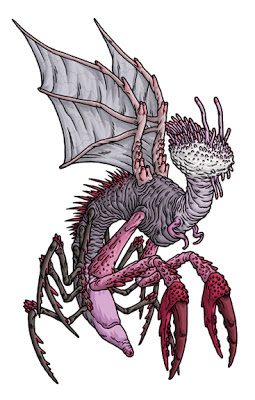
This section contains about 36 monsters, which is pretty good monster per page density. I have to say about 36, because I'm genuinely not sure where to count the different flavors of Cthonian as separate monsters or whether the fact that Dagon gets a separate writeup from Deep Ones should count. It also doesn't help that the book uses exactly the same heading size for a new monster as it does for the special rules for a monster's power. Even counting statblocks isn't much help, as some monsters have multiple stat blocks and a scant few don't have stat blocks at all (Tcho-Tchos apparently “use human stats,” which in a percentile roll-under system where human skills are numbered 1-99, is basically completely useless information).

Cthonians have a complex life cycle and therefore need more than 2 pages of text to explain. All other races don't.
This was technically the second solid effort at doing RPG stats for Mythos monsters after Deities & Demigods from TSR. Which caused Chaosium to sue them because they had the license for using the Mythos in games. But anyway, if you had to compare the two, which you totally could, CoC is the superior effort, if only by the numbers - although you could argue they also made better use of the fluff and chew space.
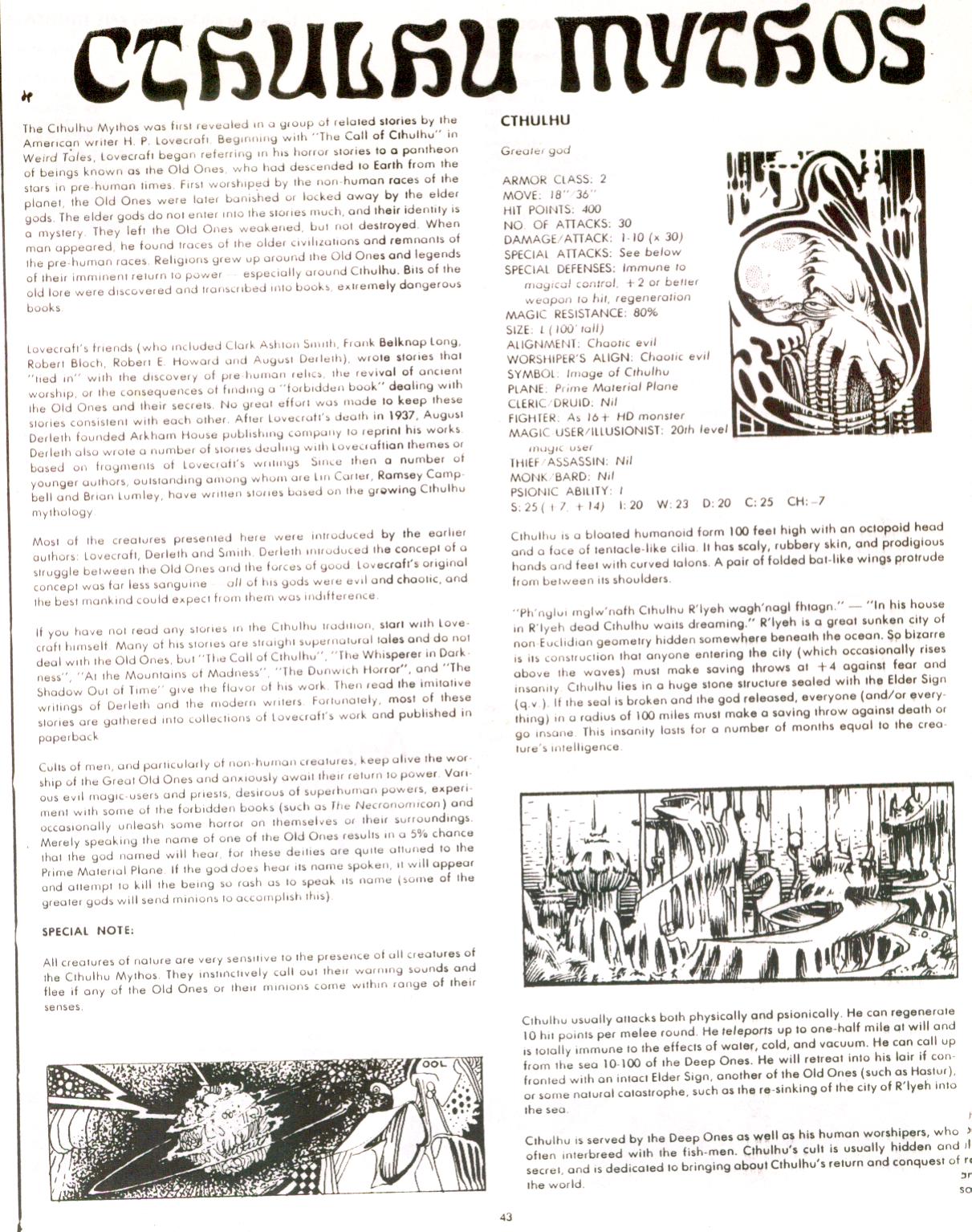 A few fans of the Mythos probably scoff at giving the Mythos monsters any stats at all. After all, if it has hit points you can kill it. And that is true for Call of Cthulhu as well, but they did it anyway (which is good)...and then gave several of them large fuck-you powers and immunities so it would never happen (which is bad). I like it in that like Deities & Demigods 1st edition, you get the sense that these are actual material (more or less) creatures, not just anonymous fictional deities where the head priest decides what the actual will of the god is which happens to coincide with him fucking your wife and daughter. On the other hand, it does detract somewhat from the mystique of these monsters, and as I pointed out with the field guides, that can be detrimental to the game as well.
A few fans of the Mythos probably scoff at giving the Mythos monsters any stats at all. After all, if it has hit points you can kill it. And that is true for Call of Cthulhu as well, but they did it anyway (which is good)...and then gave several of them large fuck-you powers and immunities so it would never happen (which is bad). I like it in that like Deities & Demigods 1st edition, you get the sense that these are actual material (more or less) creatures, not just anonymous fictional deities where the head priest decides what the actual will of the god is which happens to coincide with him fucking your wife and daughter. On the other hand, it does detract somewhat from the mystique of these monsters, and as I pointed out with the field guides, that can be detrimental to the game as well.
Part of the larger issue is that there just aren't a lot of monsters. D&D has all of world history and folklore and medieval bestiaries and the boundless imagination of six-year-olds when it comes to creating monsters ("Three tits. Awesome."), but Lovecraft himself only wrote about 60 stories and most of the ones under the heading "Mythos" used the same monsters or entities. So of course the CoC guys had to raid a good chunk of Cthulhu Mythos fiction just to get a reasonable stable of beasties and they still raided a couple stock monsters right on top of that, just to fill out the roster.
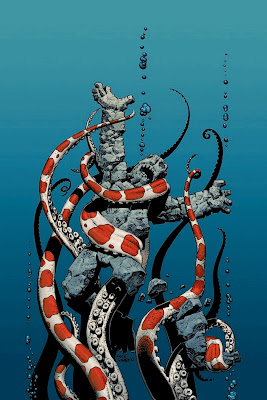
The single most SFW piece Richard Corben has ever made.
Monsters for the most part are given attributes. Races are given stat ranges, which are given average values. The averages are generally calculated correctly, and the only thing that brought me pause was the decision to report the Star Spawn's Constitution value of 3D6x5 as “52-53.” Obviously, the average value is 52.5, but the median values are 50 and 55. You cannot roll a 52, nor can you roll a 53. They just decided to report fractional means as pairs of integers, and it's just an odd choice.

Well, two out of three ain't bad.
But of course, whether you have a 50 or a 55 in a stat, that's still more than 20. And that makes the entire “roll under 5 times the attribute” system the game has going for attribute tests go out the window. The basic problem here is that a D100 roll-under system can't handle things that are outside of its range. You might have two Cthonians or Star Spawns who have POWs of 21 or 23, which results in a luck roll of 105% or 115% respectively. But that doesn't mean anything. They just succeed on every possibly result, they don't actually output anything different. Flat RNGs always struggle with large differences in power, but a roll-under system like what CoC is trying to use simply can't scale at all. So when you see the monster listings with their wildly out-of-human-range attributes, you know that they basically don't fit into the game system at all. The resistance table tries to port scaling into the system, but it's only for opposed attribute tests and also works very poorly.

Cthonians are reliably good at sports.
Frank's probably giving this more thought than the original authors, which is fine. This was long before CR was a thing, and there's no such thing as XP so there are no XP rewards listed for these beasties, and no indication of what an appropriate encounter with any of these things looks like. Which is probably fitting for the setting, but hell for the keeper to set up a scenario.
One of the things that you do notice is that a lot of these critters are...weirdly underpowered. Byakhee for example have a straight 35% on their Bite and Claw skills; odds are you can seriously punch one of these bastards to death before they hit you.
Monsters have armor, which is a number that is subtracted from every single incoming attack. This in turn means that you need big weapons and that small weapons are insulting bullshit that isn't worth your time. Note that this is completely not what the author claimed when giving lame excuses for why the players were wrong to want heavy weapons. Some monsters, such as Dark Young, instead have completely arbitrary resistance to firearms where they only take minimum damage. Which of course still means that moving up to fully automatic military-grade weapons is obviously very much superior to not doing that.

Dark Young are arbitrarily resistant to elephant rifles.
While monsters generally do relative fucktonnes of damage and tend to have the kind of very high combat skills that the authors claim you shouldn't have unless you're a cheese head, they actually don't have all that many hit points. The aforementioned Dark Young only takes 1 hit point per bullet, but it also only has 31 hit points. So if you unload three 20-round bursts of submachine gun fire (average 31.5 hits), it's dead in one round. On the other hand, its Strength of 44 means that it has an absolutely ridiculous melee damage compared to the hit points of the investigators. You have to look that up, because it just tells you that it adds its strength bonus to its trample damage. But I'll save you the trouble – it's 6D6 total (which considering that you probably have like 12 hit points, basically just means you're fucked).
I have the feeling I'm supposed to be going on about the lore of these critters here, but there's like 30+ of them so fuck it. Suffice it to say that all of the regular beasties from Lovecraft's fiction are here except for some Dreamlands critters, because those guys later went into the Dreamlands book.
 Not gonna lie to you, this is probably a better RPG book than CoC on its lonesome.
Not gonna lie to you, this is probably a better RPG book than CoC on its lonesome.
...as well as the basics from August Derleth, Clark Ashton Smith, Frank Belknap Long, Ramsey Campbell, and Brian Lumley's mythos stories. They went for Dholes instead of Bholes, which means nothing to you if you don't care about a minor fan dispute that seriously began over a spelling error.
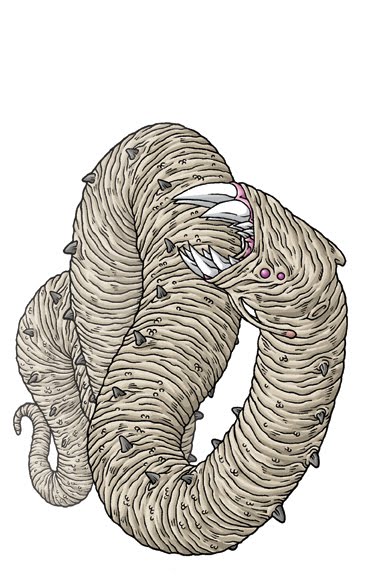
Dhole.
Below him the ground was festering with gigantic Dholes, and even as he looked, one reared up several hundred feet and leveled a bleached, viscous end at him.
—H. P. Lovecraft and E. Hoffmann Price, "Through the Gates of the Silver Key".
Alien Technology

Could be worse.
Nestled in between the first part of the monster manual and the second is the previously mentioned rant by a different author about alien tech. It really looks like this began its life as an essay in a gaming magazine or something. It follows what would become the Cracked or Something Awful format of “9 crazy devices that aliens will stick up your butt” or whatever.

This FBI agent is on record as saying that anal probes are preferable to chip implantation.
Toward the end of his life, Lovecraft turned from describing Mythos entities in terms of being supernatural to being out-and-out science fiction aliens. It makes for a bit of confused reading, and Lovecraft for his part never made a go at sorting all this shit out during his lifetime. But that's why most of the races listed here (Elder Things, Mi-Go, Serpent People, Yithians) are from Lovecraft's later writings, and even then the bulk of the devices are are from fiction written by people that used these races after Lovecraft had died.
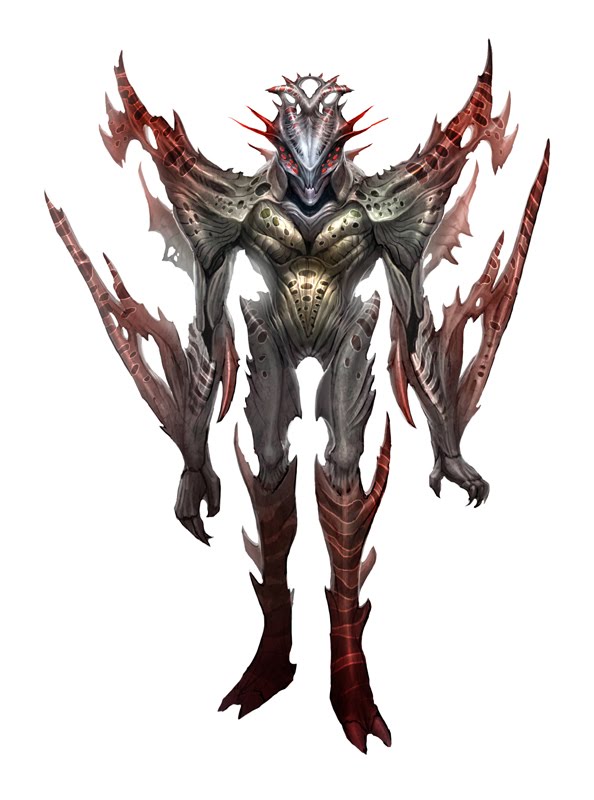
This stuff would come later.
Incidentally, Call of Cthulhu was highly influential in actually defining key terms like "Great Old Ones" and "Elder Things," because Lovecraft tended to use these terms interchangeably in his stories to refer to different races. So in Lovecraft's Mythos "Old Ones" could refer to GOOs, Elder Things, K'n-y'ns, etc., but in CoC the terminology is much more rigidly codified...and that's why we largely use that today.
Most of the items here are not given rules. Some are. Those rules aren't very good, and I don't even particularly care. There are some very complicated rules about how many rounds it takes to drain someone's memories with a Yithian Tabula Rasa Device, and it just doesn't matter.
Plenty of CoC's scenarios and adventures have additional technology, which is pretty much used to do whatever the fuck is needed for an adventure. Seriously, we're right into "Sufficiently Advanced Alien Technology is Indistinguishable From Magic" here, so you have Mi-Go using sorcery and lightning guns side-by-side, or have glowing crystals that they fill up with Magic Points, and all sorts of crap. There's no real limits given, and I think that's on purpose; these are essentially part of the scenery, not equipment that the PCs are intended to pick up or plan to acquire like magic items in D&D.
Deities of the Mythos

Now that we've passed the intermission, we get to where the Great Old Ones are.
We're back to monster entries, now using 18 pages to give stats to literal gods that you are never going to fight or meet. While the stat lines are basically wasted space, cults dedicated to these guys are the primary antagonists of the game, so there's some important world building here. First we get a classification of the gods into Elder Gods, Great Old Ones, and Outer Gods. That's important, because earlier in this book there was a big rant about how they were purposefully leaving out the Elder Gods because go fuck yourself, but they are actually in here after all. I don't know why. I suspect it has something to do with this section and the earlier section about the Cthulhu Mythos having different authors, which they do.

Consistency in religion descriptions basically makes it feel inauthentic anyway.
Noticeably absent from this grouping are any of the "nicer" gods from Brian Lumley's stories - I'm not sure they were out yet at this point, come to think of it - and most of the really obscure or batshit insane gods that clutter up wikipedia.

Most of these.
Each god gets their own Lovecraft quote. Note that not all of these quotes are about the god in question. Many of these gods were written by other authors, some even after Lovecraft was dead. So while there's a quote from Lovecraft about how fukken sweet cats are at the start of the Bast entry, the fact remains that Lovecraft did not write Bast into his stories.
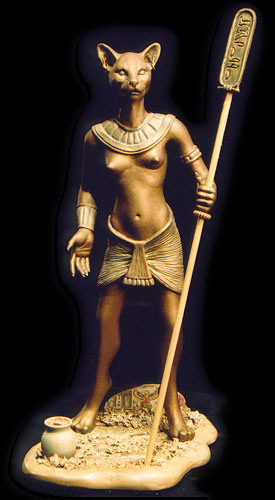
Bast, the original cat furry, is canon. But expanded universe canon. Not original series.
Well, he mentioned her. And Robert Bloch did write her in, but as a sort of hybrid ghoul creature that the Egyptians managed to breed using bestiality and SCP-889 (sortof). Look, it wasn't a great story, but Lovecraftians accept Bast and so should you.
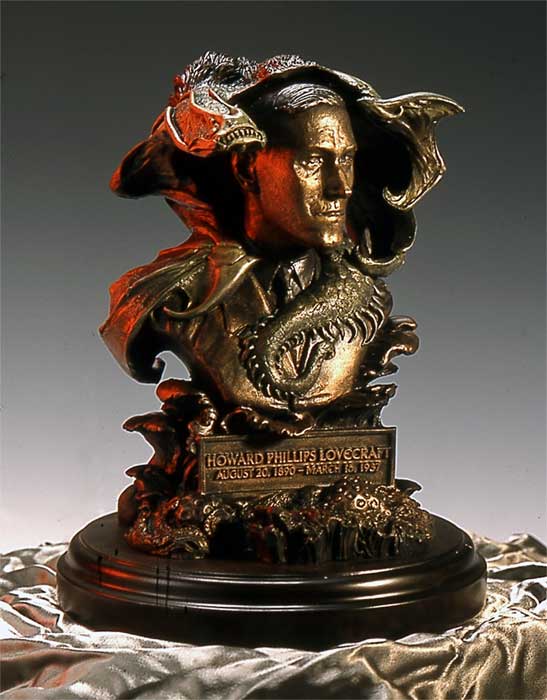
That'll do.
Much fapping is to be had with rants about how unbeatable Cthulhu is. Several other gods get similar treatment (Shub-Niggurath, for example). Others are more reasonable, but the bottom line is that none of these things should be a thing you ever meet in direct confrontation, so fappery about how hard it would be if you did is rather missing the point. Gods are allowed to have 100% to-hit chances, as opposed to non-gods who have to make do with the 99% cap. Actually, since Dodging is a thing, you can actually ninja-tank these gods for a long assed time even if they do “always successfully attack” because of the fact that roll-under systems are lame.
But while the mechanics are garbage and would be a waste of space even if they weren't ass – there's a fair amount of information on these guys. It's not actually a terrible introduction to the setting, and it probably should have come much earlier in the book.
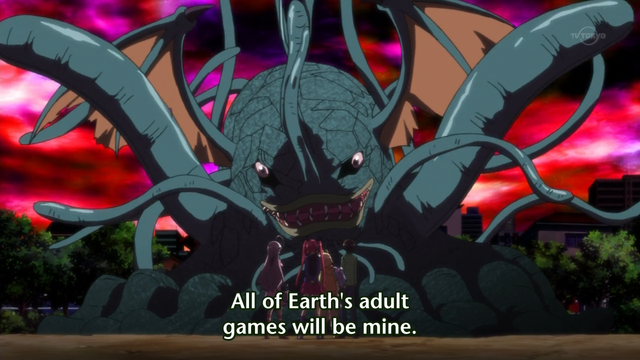
Should probably say a bit more about what these gods actually want, because otherwise the fans just sort of... fill that in themselves.
We haven't talked about the art much in this section, which consists mainly of shrunken-down images by Earl Grier. I like EG's art, but a lot of this stuff is terrible or so shrunken it actually smudges together. It's stuff like this that makes you appreciate what Chaosium can do when they actually have an art budget.
Following up, the last actual critter section!
Creatures of the Mythos

Same writers, but a much better book.
Musical accompaniment: Black Sabbath - Beyond the Wall of Sleep
AncientH:
Today is the 124th anniversary of H. P. Lovecraft's birth, and while many people are sharing their favorite stories that he had written and their images honoring his memory and accomplishments, I'd like to share my favorite story about Lovecraft, as told by his wife:
While visiting Magnolia, that beautiful, exclusive summer resort on the north shore of Massachusetts, we often walked to Gloucester, which was a distance of about four miles. On our way we passed a beautiful esplanade. One evening while walking along this esplanade, the full moon reflecting its light in the water, a peculiar and unusual noise heard at a distance as of a loud snorting and grunting, the shimmering light forming a moon-path on the water, the round tops of the submerged piles in the water exposed a rope connecting them like a huge spider's guy-line, gave the vivid imagination full play for an interesting weird tale.
"Oh, Howard," I exclaimed, "here you have the setting for a real strange and mysterious story."
Said he, "Go ahead, and write it."
"Oh, no, I couldn't do it justice," I answered.
"Try it. Tell me what the scene pictures to your imagination."
And as we walked along we neared the edge of the water. Here I described my interpretation of the scene and the noises. His encouragement was so enthusiastic and sincere that when we parted for the night, I sat up and wrote the general outline which he later revised and edited. His continued enthusiasm the next day was so genuine and sincere that in appreciation I surprised and shocked him right then and there by kissing him. He was so flustered that eh blushed, then he turned pale. When I chaffed him about it he said he had not been kissed since he was a very small child and that he was never kissed by any woman, not even by his mother or aunts, since he grew to manhood, and that he would probably never be kissed again. (But I fooled him.)
From "The Private Life of H. P. Lovecraft" (Necronomicon Press, 19). The story they wrote was "The Horror at Martin's Beach," published in the November 1923 issue of Weird Tales as "The Invisible Monster."
http://www.hplovecraft.com/writings/tex ... n/hmb.aspx
FrankT:
The “Creatures of the Mythos” section is 24 pages, but it's not the whole monster manual. There's also a “Deities of the Mythos” section and a “Beasts & Monsters” section. But they aren't adjacent to this section. There's an in-between section where there is an essay about alien technology by Shannon Appel. No one knows why. You'd think that you'd put all the monster manual sections together, possibly even giving them their own chapter to be in. But no. If there is any organizational principle in this book it is to eschew any organization that would make any sense to anybody.

This section contains about 36 monsters, which is pretty good monster per page density. I have to say about 36, because I'm genuinely not sure where to count the different flavors of Cthonian as separate monsters or whether the fact that Dagon gets a separate writeup from Deep Ones should count. It also doesn't help that the book uses exactly the same heading size for a new monster as it does for the special rules for a monster's power. Even counting statblocks isn't much help, as some monsters have multiple stat blocks and a scant few don't have stat blocks at all (Tcho-Tchos apparently “use human stats,” which in a percentile roll-under system where human skills are numbered 1-99, is basically completely useless information).

Cthonians have a complex life cycle and therefore need more than 2 pages of text to explain. All other races don't.
AncientH:
This was technically the second solid effort at doing RPG stats for Mythos monsters after Deities & Demigods from TSR. Which caused Chaosium to sue them because they had the license for using the Mythos in games. But anyway, if you had to compare the two, which you totally could, CoC is the superior effort, if only by the numbers - although you could argue they also made better use of the fluff and chew space.

Part of the larger issue is that there just aren't a lot of monsters. D&D has all of world history and folklore and medieval bestiaries and the boundless imagination of six-year-olds when it comes to creating monsters ("Three tits. Awesome."), but Lovecraft himself only wrote about 60 stories and most of the ones under the heading "Mythos" used the same monsters or entities. So of course the CoC guys had to raid a good chunk of Cthulhu Mythos fiction just to get a reasonable stable of beasties and they still raided a couple stock monsters right on top of that, just to fill out the roster.

The single most SFW piece Richard Corben has ever made.
FrankT:
Monsters for the most part are given attributes. Races are given stat ranges, which are given average values. The averages are generally calculated correctly, and the only thing that brought me pause was the decision to report the Star Spawn's Constitution value of 3D6x5 as “52-53.” Obviously, the average value is 52.5, but the median values are 50 and 55. You cannot roll a 52, nor can you roll a 53. They just decided to report fractional means as pairs of integers, and it's just an odd choice.

Well, two out of three ain't bad.
But of course, whether you have a 50 or a 55 in a stat, that's still more than 20. And that makes the entire “roll under 5 times the attribute” system the game has going for attribute tests go out the window. The basic problem here is that a D100 roll-under system can't handle things that are outside of its range. You might have two Cthonians or Star Spawns who have POWs of 21 or 23, which results in a luck roll of 105% or 115% respectively. But that doesn't mean anything. They just succeed on every possibly result, they don't actually output anything different. Flat RNGs always struggle with large differences in power, but a roll-under system like what CoC is trying to use simply can't scale at all. So when you see the monster listings with their wildly out-of-human-range attributes, you know that they basically don't fit into the game system at all. The resistance table tries to port scaling into the system, but it's only for opposed attribute tests and also works very poorly.

Cthonians are reliably good at sports.
AncientH:
Frank's probably giving this more thought than the original authors, which is fine. This was long before CR was a thing, and there's no such thing as XP so there are no XP rewards listed for these beasties, and no indication of what an appropriate encounter with any of these things looks like. Which is probably fitting for the setting, but hell for the keeper to set up a scenario.
One of the things that you do notice is that a lot of these critters are...weirdly underpowered. Byakhee for example have a straight 35% on their Bite and Claw skills; odds are you can seriously punch one of these bastards to death before they hit you.
FrankT:
Monsters have armor, which is a number that is subtracted from every single incoming attack. This in turn means that you need big weapons and that small weapons are insulting bullshit that isn't worth your time. Note that this is completely not what the author claimed when giving lame excuses for why the players were wrong to want heavy weapons. Some monsters, such as Dark Young, instead have completely arbitrary resistance to firearms where they only take minimum damage. Which of course still means that moving up to fully automatic military-grade weapons is obviously very much superior to not doing that.

Dark Young are arbitrarily resistant to elephant rifles.
While monsters generally do relative fucktonnes of damage and tend to have the kind of very high combat skills that the authors claim you shouldn't have unless you're a cheese head, they actually don't have all that many hit points. The aforementioned Dark Young only takes 1 hit point per bullet, but it also only has 31 hit points. So if you unload three 20-round bursts of submachine gun fire (average 31.5 hits), it's dead in one round. On the other hand, its Strength of 44 means that it has an absolutely ridiculous melee damage compared to the hit points of the investigators. You have to look that up, because it just tells you that it adds its strength bonus to its trample damage. But I'll save you the trouble – it's 6D6 total (which considering that you probably have like 12 hit points, basically just means you're fucked).
AncientH:
I have the feeling I'm supposed to be going on about the lore of these critters here, but there's like 30+ of them so fuck it. Suffice it to say that all of the regular beasties from Lovecraft's fiction are here except for some Dreamlands critters, because those guys later went into the Dreamlands book.

...as well as the basics from August Derleth, Clark Ashton Smith, Frank Belknap Long, Ramsey Campbell, and Brian Lumley's mythos stories. They went for Dholes instead of Bholes, which means nothing to you if you don't care about a minor fan dispute that seriously began over a spelling error.

Dhole.
Below him the ground was festering with gigantic Dholes, and even as he looked, one reared up several hundred feet and leveled a bleached, viscous end at him.
—H. P. Lovecraft and E. Hoffmann Price, "Through the Gates of the Silver Key".
Alien Technology

Could be worse.
FrankT:
Nestled in between the first part of the monster manual and the second is the previously mentioned rant by a different author about alien tech. It really looks like this began its life as an essay in a gaming magazine or something. It follows what would become the Cracked or Something Awful format of “9 crazy devices that aliens will stick up your butt” or whatever.

This FBI agent is on record as saying that anal probes are preferable to chip implantation.
AncientH:
Toward the end of his life, Lovecraft turned from describing Mythos entities in terms of being supernatural to being out-and-out science fiction aliens. It makes for a bit of confused reading, and Lovecraft for his part never made a go at sorting all this shit out during his lifetime. But that's why most of the races listed here (Elder Things, Mi-Go, Serpent People, Yithians) are from Lovecraft's later writings, and even then the bulk of the devices are are from fiction written by people that used these races after Lovecraft had died.

This stuff would come later.
Incidentally, Call of Cthulhu was highly influential in actually defining key terms like "Great Old Ones" and "Elder Things," because Lovecraft tended to use these terms interchangeably in his stories to refer to different races. So in Lovecraft's Mythos "Old Ones" could refer to GOOs, Elder Things, K'n-y'ns, etc., but in CoC the terminology is much more rigidly codified...and that's why we largely use that today.
FrankT:
Most of the items here are not given rules. Some are. Those rules aren't very good, and I don't even particularly care. There are some very complicated rules about how many rounds it takes to drain someone's memories with a Yithian Tabula Rasa Device, and it just doesn't matter.
AncientH:
Plenty of CoC's scenarios and adventures have additional technology, which is pretty much used to do whatever the fuck is needed for an adventure. Seriously, we're right into "Sufficiently Advanced Alien Technology is Indistinguishable From Magic" here, so you have Mi-Go using sorcery and lightning guns side-by-side, or have glowing crystals that they fill up with Magic Points, and all sorts of crap. There's no real limits given, and I think that's on purpose; these are essentially part of the scenery, not equipment that the PCs are intended to pick up or plan to acquire like magic items in D&D.
Deities of the Mythos

Now that we've passed the intermission, we get to where the Great Old Ones are.
FrankT:
We're back to monster entries, now using 18 pages to give stats to literal gods that you are never going to fight or meet. While the stat lines are basically wasted space, cults dedicated to these guys are the primary antagonists of the game, so there's some important world building here. First we get a classification of the gods into Elder Gods, Great Old Ones, and Outer Gods. That's important, because earlier in this book there was a big rant about how they were purposefully leaving out the Elder Gods because go fuck yourself, but they are actually in here after all. I don't know why. I suspect it has something to do with this section and the earlier section about the Cthulhu Mythos having different authors, which they do.

Consistency in religion descriptions basically makes it feel inauthentic anyway.
AncientH:
Noticeably absent from this grouping are any of the "nicer" gods from Brian Lumley's stories - I'm not sure they were out yet at this point, come to think of it - and most of the really obscure or batshit insane gods that clutter up wikipedia.

Most of these.
FrankT:
Each god gets their own Lovecraft quote. Note that not all of these quotes are about the god in question. Many of these gods were written by other authors, some even after Lovecraft was dead. So while there's a quote from Lovecraft about how fukken sweet cats are at the start of the Bast entry, the fact remains that Lovecraft did not write Bast into his stories.

Bast, the original cat furry, is canon. But expanded universe canon. Not original series.
AncientH:
Well, he mentioned her. And Robert Bloch did write her in, but as a sort of hybrid ghoul creature that the Egyptians managed to breed using bestiality and SCP-889 (sortof). Look, it wasn't a great story, but Lovecraftians accept Bast and so should you.

That'll do.
FrankT:
Much fapping is to be had with rants about how unbeatable Cthulhu is. Several other gods get similar treatment (Shub-Niggurath, for example). Others are more reasonable, but the bottom line is that none of these things should be a thing you ever meet in direct confrontation, so fappery about how hard it would be if you did is rather missing the point. Gods are allowed to have 100% to-hit chances, as opposed to non-gods who have to make do with the 99% cap. Actually, since Dodging is a thing, you can actually ninja-tank these gods for a long assed time even if they do “always successfully attack” because of the fact that roll-under systems are lame.
But while the mechanics are garbage and would be a waste of space even if they weren't ass – there's a fair amount of information on these guys. It's not actually a terrible introduction to the setting, and it probably should have come much earlier in the book.

Should probably say a bit more about what these gods actually want, because otherwise the fans just sort of... fill that in themselves.
AncientH:
We haven't talked about the art much in this section, which consists mainly of shrunken-down images by Earl Grier. I like EG's art, but a lot of this stuff is terrible or so shrunken it actually smudges together. It's stuff like this that makes you appreciate what Chaosium can do when they actually have an art budget.
Following up, the last actual critter section!
Last edited by Ancient History on Thu Aug 21, 2014 12:16 am, edited 1 time in total.
- Ancient History
- Serious Badass
- Posts: 12708
- Joined: Wed Aug 18, 2010 12:57 pm
- Ancient History
- Serious Badass
- Posts: 12708
- Joined: Wed Aug 18, 2010 12:57 pm
Reference
Beasts & Monsters
Music: The Music of Erich Zann (Violin Solo)

Some of the derivative works are weirder than others. If you want us to explain how this image is related to Lovecraft in general and this section in particular, we will do that.
This section is mostly mundane critters. Bats, bears, bobcats, that kind of thing. Also, for reasons inexplicable to man, they shoved some ghosts and ghoulies (but not actual, proper ghouls because those were addressed previously) in the back.
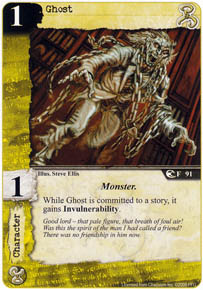
White Dwarf had some more extensive rules for ghosts in one of their early issues, and I'm 88% sure this section doesn't steal from it. Maybe 84%.
Following the 24 pages of Mythos monsters and the 18 pages of Mythos gods, we get a third monster manual. This is 9 pages, and represents both traditional horror monsters (Vampires, Werewolves, and Zombies, for example) and also straight up up animals. To a certain extent, this just sort of had to happen. While the book is nominally about Mythos-baed alien horror, it's pretty hard to play a horror game without zombies showing up at some point. And besides, Herbert West wouldn't even want you to.
The animals also kind of have to happen because you're playing in what is nominally the real world, and dogs and bears and shit need stats. This being a game based on early D&D hacks, the animal statlines are kind of insane. We've all made jokes about how housecats could rip through 1st level characters in most versions of D&D, but Runequest and its spawn were no better at this sort of thing. In some ways, they are worse.

Honestly, this is the section where the basic batshittery of the stats is most obvious. I mean, this book literally set our expectations for what Gugs were capable of. Well, not this book specifically, but an earlier edition of this book was the actual first attempt to nail down what a Gug was or did. If someone fucked up the Gug (or any of the other Mythos monsters) in their conversions, most people wouldn't know or care. At this point, the Mythos scholarship has spent so much time sucking Call of Cthulhu's cock that whatever stat assignments they made became the benchmarks of our expectations of what these creatures were capable of. Sometimes this created lame circle jerking feedback loops where people continually one-upped each other's stories about how great Greath Cthulhu was and that resulted in Cthulhu getting an inflated MC-penis, but for the most part CoC simply became its own primary source and that was that.
But with the animals, this just doesn't wash. First off, superhuman stats break the system because roll-under systems blow monkey ass. Also, apparently Andean Giant Condors have super-human strength. I don't even know what that's about. They get 3D6+12 for strength (humans run 3-18) because the author does not know what a giant condor is.

This is a giant condor. It is not the same thing as a Tolkienian giant eagle.
Some of the critters included are...questionable. The bunyip, for example, and the cape buffalo, are not critters you would normally expect to see in any game. But I guess this was supposed to be set during the 1920s, when your character could be a Great White Hunter without anyone actually blinking or expressing strong disapproval.
Also, because this game is nominally set in the real world, like Shadowrun with the Paranormal Animals of...) books it feels the need to give us species names. I can see why they did this, and I sort of tentatively approve, because Latinitis often infects academic NPCs, but it still seems like "one more thing to fuck up" when writing these.
We're basically in choose-your-own-adventure for Vampires. That washed in 1983, and it probably washed in 1989, but in 1999 the whole Masquerade thing had gone on for too long for it to be acceptable to just say that vampires were different and throw out some Dracula quotes.

We don't ask for anything in particular, we just want you to commit to something in particular.
We get a rant about how Werewolves don't get to change mass, just become man-sized dogs. Rar! Frankly, in the land of “I have a fucking gun,” I am not afraid of a 70 kilogram dog. That's a very impressive dog, but unless Werewolves do the full Underworld/Apocalypse/Teen Wolf war-form, they just aren't very scary. We're talking Twilight levels of not scary.
We do get almost the entire set of Universal Monsters, with vampires, mummies, werewolf, Deep Ones for the Creature from the Black Lagoon and zombies for Frankenstein's Monster (why no golem? Why indeed?)...there's not really much to rant about but when has that ever stopped us?

I've probably mentioned this before, but one of my great dislikes about Call of Cthulhu is that it is essentially a giant licensed product RPG, and so it doesn't feel the need to do any of it's own worldbuilding...which I think is a mistake. I mean, it is understandable, the Cthulhu Mythos is huge and sprawling and written by people that weren't always talking to each other. Lots of the fine print doesn't line up very well. But occasionally I would like a uber-nerd to come along and, say, collate the vast majority of the Mythos references to Ancient Egypt and put them together into some pseudo-history so that keepers didn't have to do all the legwork themselves. Which is, indeed, the entire argument for having a roleplaying game in the first place, so that each Mister Cavern doesn't have to do all the fucking work themselves. And don't tell me shit about how Secrets of Cairo or whatever is a book, if there are mummies and Nyarlathotep and Bast in the main fucking rulebook and a timeline that stretches back to before the dawn of life on earth, a look at how the Black Pharaoh thing went down in Egypt so that people are digging up cursed relics from the sands today would not go amiss.
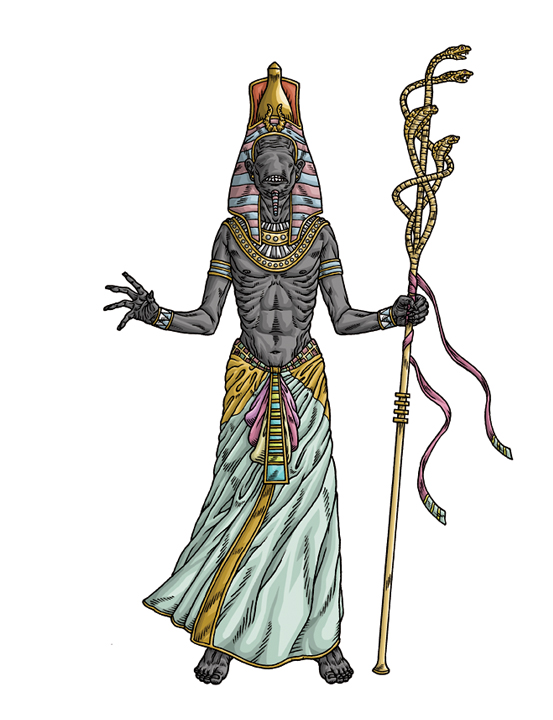
I mean, leave Khai of Khem out of it, sure, but give us the faceless sphinx or something.
Personalities
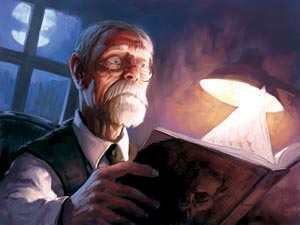
Clocking in at 4 pages, the “Personalities” section is just a list of people who showed up in Lovecraft books with some sketches and character sheets. I can't tell how much or little thought went in to deciding on a strength score for Pickman or Dr. West, and to an extent it doesn't matter. To a certain kind of fanboy, all of the stats will always be wrong. Just like for Star Wars characters, there will always be a section of the fanbase who insists your assessment of Vader's Charisma or Leia's Constitution isn't tough enough, there are no numbers you could pick that would be high enough for certain kinds of fans. On the flip side, for every fan who insists that your stats don't make Han Solo sneaky enough, there's a fan who just wants to play Han Solo and will be pissed at the game if he is not allowed to do so. You can't fucking win.
A few characters have super-human stats, but I doubt they are superhuman enough to please everyone, and I know for a fact that by being outside the realms that player characters can achieve, there are a number of fans who are likewise disappointed.
They're not bad, really. In general I'm a big fan of example characters because they show players what is possible with their characters, once you go beyond the pre-generated material in the book, but without going gamebreakingly munchkin or violating the setting. That said, Randolph Carter totally has Speak Cat 35%.

In Ulthar, no man may kill a cat.
The biggest problem with these entries is...well, they're campy. They were obviously made by somebody having a bit of fun, not looking to make perfect, fully-fleshed out characters. Full of injokes like "Hear Rats 85%" for a character from "The Rats in the Walls" or "Turn Away From Reality 40%" for a Dreamlands character. Some of the stats are just fucking worthless, like "Drive Automobile 0%" and "Imagine 90%."
This is probably a good point in time to point out another kinda-basic flaw in the whole CoC skill system: basic stuff like "English" isn't included on most of these sheets, but according to the rules every character has an actual skill level in their native language. Which means your Keeper could roll some dice behind the screen and the scene description suddenly turns into "rhubarb rhubarb rhubarb."
One thing is that some of these characters have unique skills, and that is fucked. Dr. Herbert West has a 55% in “Select Best Nervous System.” I do not know what the fuck that means, but it's apparently high enough for Dr. West to make a living of some kind selecting nervous systems. Like on a game show or something. Maybe. De La Poer has a 90% in fucking “Love Cats.” This is the broken foundation upon which Unknown Armies was built. It was fucked in its first foul incarnation, and through rote repetition it has only become more slovenly and pathetic.
Also, in a weird crux of nerddom, they made Erich Zann a violist. Now, Lovecraft does call Zann's instrument a viol, but that's because HPL thought it was shorthand for violin, and none of the action actually describes how Zann playing it, so to this day, people still argue over which fucking instrument Zann was playing.

Violin.
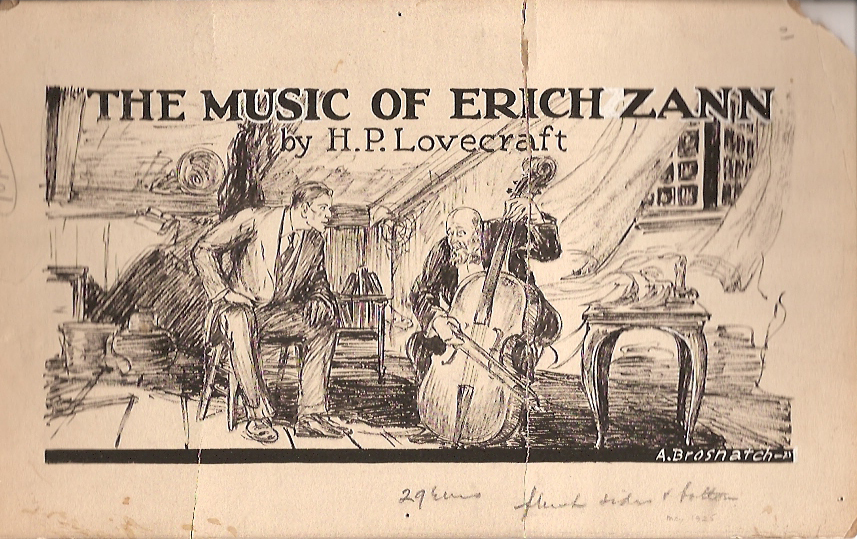
Viol.
A Mythos Grimoire

Or any other magic book image that suits your fancy.
Wait, didn't we already have a section or three on Mythos books? Well, this is actually about casting spells. Wait, didn't we already have a couple of those already too? Yeah. I have actually lost count of how many separate sections the editor has seen fit to hide various portions of the rules for magic in this game. This particular section is 28 pages long and can probably eat all the other sections. It's also probably the most important, because it's the one that actually tells you what some of the spells do. The fact that pretty much nothing in this book is where you'd think it should be, or attached to other rules of its kind gives the entire reading a somewhat surreal vibe.

Japan has an entire genre of young women with meat on their heads being chased by komodo dragons.
Calling what Call of Cthulhu uses a "magic system" is actually a bit inaccurate. There is no system. There are no spell levels, casting times, level effects, uniform effects, save DCs, consistent format for presenting the spells or any of that. What they are is a grab bag of effects, some of which overlap, all hanging under the loose title "spells."
There's two good reasons for this. The first is that Lovecraft never had a strongly developed idea of any sort of magical system underlying his works, and all the other Mythos writers pretty much went their own way about it. If you wanted to actually categorize these into something recognizable as an RPG system, you'd have to do it after the fact...and, well, they basically chose not to do that. The best you can say about imposing any sort of organization is that they identified several families of similar spells and looped them into loose groupings under common nomenclature...which is why have Summon/Bind <insert Mythos entity here> spells, and Contact <Mythos Deity> spells, and Gate...but that's really as far as it went.
The second reason that spells are the unmitigated clusterfuck that they are is that it's a direct result of the kind of play that the game encouraged. If you think about, the level-based spell system fits D&D (somewhat) because it's a level-based game where characters are segregated by their abilities and increase in power hierarchically; magic is restricted to certain character classes, and more powerful magic is restricted to the higher levels of those classes, which works fine in the context of D&D - but not in the context of Lovecraftian horror, where you want people to stumble across and old book and casually read out some ancient burst of Latinitis and bad shit happens.
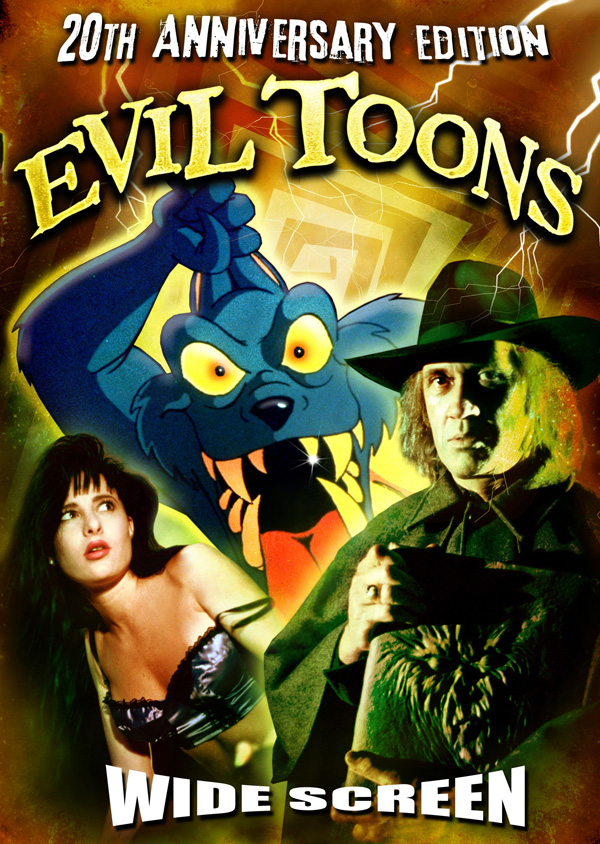
So, I'm actually okay with there being a democratic spell selection, where potentially anyone can be a (admittedly crappy) wizard as needs and resources dictate. What I dislike is that there's...no alternatives presented in this book. Okay, fine, plenty of people like playing a game where you find the tome and hope it has the spell you need, but there are other games where maybe you want a big spellbook under the player character's control that might have the spell they need to tackle the monster of the week, or the character is an occultist that actually knows more than you can get by browsing Thelema articles on the internet over your lunch hour. Those types of play aren't ever really addressed in CoC (spin-off games, yes; hell Catthulhu lets player cats who are familiars start off with a spell or two if they pay for it), and because of that there's basically been no evolutionary pressure to reformat or improve the spell system...ever. It's part of the reason why Earthdawn's effort to merge D&D and CoC casting resulted in the weird clusterfuck that is grimoire casting.
So these spells, here, are far from the only spells in Call of Cthulhu - there are entire books filled with other spells. But they don't incorporate them into the main book. Even in Call of Cthulhu d20 they mostly kept these exact same spells. I'm not saying that the same spells are in every fucking edition. But most. It's the Peter Pan of games, refusing to grow up an inch.
Spells are all supposed to be brain breaking things, but not all of them cost sanity. A lot more of them hurt your brain than appeared to in the stories, but that is a conscious design choice. Still, you can go full on Marsh clan and use magic to fill your nets with the bounty of the sea and nothing bad will happen to you. On the other hand, a lot of spells set you back 2D6 Sanity or more every time you cast them, which is just kind of nuts. Such spells are generally not things that PCs can use.
In case you were wondering, the organization of these spells is nutty. Possibly non-existent. There are sublists for spells of certain categories such as contact spells or binding spells. There is also a miscellaneous spells section at the front, and there are some binding spells in it, because go fuck yourself. Actually, I'm wrong. The spells are claimed to be in sections in the table of contents, but actually that's a lie and it's just a big alphabetical list and everything is a big miscellaneous pile unsorted by other means. Silly me.
A lot of this stuff doesn't even make sense in context of the fiction; it's one of those sub-parts of the game that sort of took on a life of its own, so even if you might only see one or two spells per game, there's dozens to choose from and interact with each other.
Unlike D&D which has always had something of a complicated relationship between spells and enchanting, CoC just straight up has spells that brew space drugs and enchant magic daggers and shit. Which sounds cool, but in practice it means each magical item has a unique spell that goes along with it. So while stuff like Brew Space Mead looks kind of workable compared to AD&D 2 and enchant an item and permanency, it's still a long and muddled way from item creation in D&D3 or Shadowrun 1st edition.
A number of spells deal with extremely large distances. As such, there is a chart to tell you how far away Sirius and Pluto are. They are, in fact, very far away.
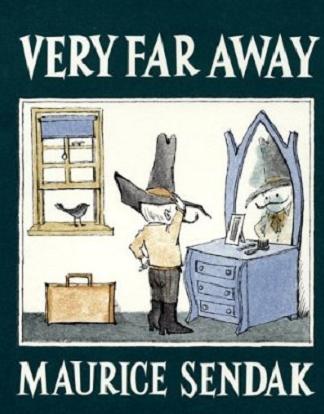
Why you might want to open a gate to a location in Galaxy M31 is left as an exercise for the reader, but it does give you an amount of magic points you'd have to spend to do that. As it happens, you'd want to do that because that is where The Planet of the Dead is in some Clark Ashton Smith material. I'm not sure if that's conventionally considered to be canon or not, but if you care, the Gate Creation & Travel Costs chart has you covered.
A lot of the spells are really more just plot devices than anything else. So some have complicated little sub-rules for resolving mental conflict or draining attribute points, and some talk about how you need ten people to do the chant but they don't all need to know the spell (except when they do). There's no real effort to make spells straightforward and easy because, frankly, the expectation is that spells aren't going to be prolific or straightforward. Your entire career as an investigator could earn you the nickname of "Wizard" for having the Bind Loup-Garou and Command Porpoise spells, even if you never encountered either of those.
There are also some signs - curiously kept between editions - that the writers weren't exactly keeping track of what spells exist. So for example, there's a pointer at "Call Fish" to the spell "Attract Fish," because some asshole twenty years ago wrote "Call Fish" while writing down some character's spells and everyone else just kept the gloss.
Many of the spells are incredibly specific and presumably came directly out of a story. Some of those stories are not HP Lovecraft stories, but later works by other authors. Some of those later works are actually adventures written for this game, so good luck tracking this shit down. So for example, there's a whole chain of spells that curse a set of pipes made from owl bones that then create haunting melodies that drive men mad. So... if you wanted to drive men mad and you had a set of pipes made out of owl bones, and you had the ability to learn all the spells in that chain, you could do that. This is so amazingly specific and limited in scope that I can only assume it's the conversion of an exact set of events that happened in a story somewhere. And I have no idea where it's from.
The book also helpfully notes which spells are “Voodoo,” but I'm at a loss to figure out why that would matter. If you image search voodoo, you get a lot of tits. Which is fine, but I guess we'll finally end this chapter on a SFW note.
I'm going to end this talking about one of the most famous spells, a defensive ward called the Elder Sign! This is supposed to be a kinda-sorta sovereign protection against various Mythos beasties, even though different people have very different ideas about it was supposed to look like. For example, in "The Shadow over Innsmouth" Lovecraft described it as a common good-luck charm of the era - a swastika.

...and in At the Mountains of Madness and some letters it's a kind of tree-like thing...

...and finally, when August Derleth (and later Chaosium) got ahold of it, it looked like a funky pentagram:
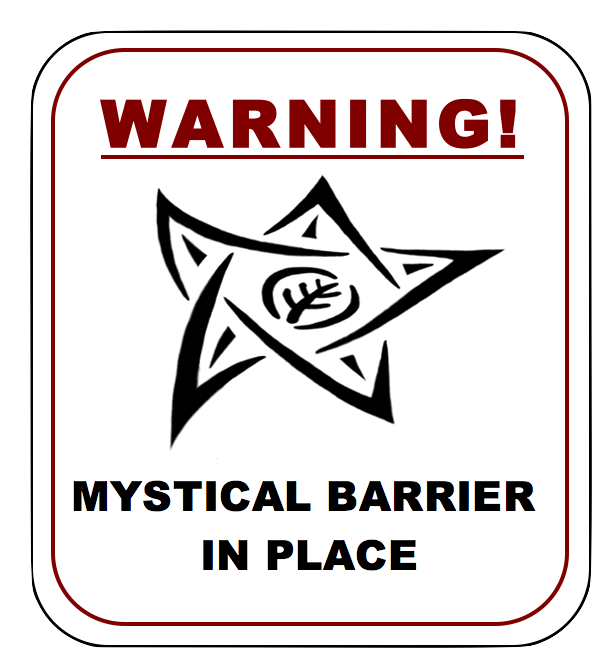
...and should at all costs not be mistaken from the sigil on the cover of the Simonomicon, as created by Khem Caigan:

Anyway, ignore any thoughts you might have about the Elder Sign being some sort of magic circle against the Mythos - it doesn't work like that. If you tattoo it on you, it'll only protect a few inches of skin that it's tattooed on. This was done specifically to fuck with players who thought carving it into the tips of their silver bullets was the go-to way of handling the Mythos.
Beasts & Monsters
Music: The Music of Erich Zann (Violin Solo)

Some of the derivative works are weirder than others. If you want us to explain how this image is related to Lovecraft in general and this section in particular, we will do that.
AncientH:
This section is mostly mundane critters. Bats, bears, bobcats, that kind of thing. Also, for reasons inexplicable to man, they shoved some ghosts and ghoulies (but not actual, proper ghouls because those were addressed previously) in the back.

White Dwarf had some more extensive rules for ghosts in one of their early issues, and I'm 88% sure this section doesn't steal from it. Maybe 84%.
FrankT:
Following the 24 pages of Mythos monsters and the 18 pages of Mythos gods, we get a third monster manual. This is 9 pages, and represents both traditional horror monsters (Vampires, Werewolves, and Zombies, for example) and also straight up up animals. To a certain extent, this just sort of had to happen. While the book is nominally about Mythos-baed alien horror, it's pretty hard to play a horror game without zombies showing up at some point. And besides, Herbert West wouldn't even want you to.
The animals also kind of have to happen because you're playing in what is nominally the real world, and dogs and bears and shit need stats. This being a game based on early D&D hacks, the animal statlines are kind of insane. We've all made jokes about how housecats could rip through 1st level characters in most versions of D&D, but Runequest and its spawn were no better at this sort of thing. In some ways, they are worse.
Honestly, this is the section where the basic batshittery of the stats is most obvious. I mean, this book literally set our expectations for what Gugs were capable of. Well, not this book specifically, but an earlier edition of this book was the actual first attempt to nail down what a Gug was or did. If someone fucked up the Gug (or any of the other Mythos monsters) in their conversions, most people wouldn't know or care. At this point, the Mythos scholarship has spent so much time sucking Call of Cthulhu's cock that whatever stat assignments they made became the benchmarks of our expectations of what these creatures were capable of. Sometimes this created lame circle jerking feedback loops where people continually one-upped each other's stories about how great Greath Cthulhu was and that resulted in Cthulhu getting an inflated MC-penis, but for the most part CoC simply became its own primary source and that was that.
But with the animals, this just doesn't wash. First off, superhuman stats break the system because roll-under systems blow monkey ass. Also, apparently Andean Giant Condors have super-human strength. I don't even know what that's about. They get 3D6+12 for strength (humans run 3-18) because the author does not know what a giant condor is.

This is a giant condor. It is not the same thing as a Tolkienian giant eagle.
AncientH:
Some of the critters included are...questionable. The bunyip, for example, and the cape buffalo, are not critters you would normally expect to see in any game. But I guess this was supposed to be set during the 1920s, when your character could be a Great White Hunter without anyone actually blinking or expressing strong disapproval.
Also, because this game is nominally set in the real world, like Shadowrun with the Paranormal Animals of...) books it feels the need to give us species names. I can see why they did this, and I sort of tentatively approve, because Latinitis often infects academic NPCs, but it still seems like "one more thing to fuck up" when writing these.
FrankT:
We're basically in choose-your-own-adventure for Vampires. That washed in 1983, and it probably washed in 1989, but in 1999 the whole Masquerade thing had gone on for too long for it to be acceptable to just say that vampires were different and throw out some Dracula quotes.

We don't ask for anything in particular, we just want you to commit to something in particular.
We get a rant about how Werewolves don't get to change mass, just become man-sized dogs. Rar! Frankly, in the land of “I have a fucking gun,” I am not afraid of a 70 kilogram dog. That's a very impressive dog, but unless Werewolves do the full Underworld/Apocalypse/Teen Wolf war-form, they just aren't very scary. We're talking Twilight levels of not scary.
AncientH:
We do get almost the entire set of Universal Monsters, with vampires, mummies, werewolf, Deep Ones for the Creature from the Black Lagoon and zombies for Frankenstein's Monster (why no golem? Why indeed?)...there's not really much to rant about but when has that ever stopped us?

I've probably mentioned this before, but one of my great dislikes about Call of Cthulhu is that it is essentially a giant licensed product RPG, and so it doesn't feel the need to do any of it's own worldbuilding...which I think is a mistake. I mean, it is understandable, the Cthulhu Mythos is huge and sprawling and written by people that weren't always talking to each other. Lots of the fine print doesn't line up very well. But occasionally I would like a uber-nerd to come along and, say, collate the vast majority of the Mythos references to Ancient Egypt and put them together into some pseudo-history so that keepers didn't have to do all the legwork themselves. Which is, indeed, the entire argument for having a roleplaying game in the first place, so that each Mister Cavern doesn't have to do all the fucking work themselves. And don't tell me shit about how Secrets of Cairo or whatever is a book, if there are mummies and Nyarlathotep and Bast in the main fucking rulebook and a timeline that stretches back to before the dawn of life on earth, a look at how the Black Pharaoh thing went down in Egypt so that people are digging up cursed relics from the sands today would not go amiss.

I mean, leave Khai of Khem out of it, sure, but give us the faceless sphinx or something.
Personalities

FrankT:
Clocking in at 4 pages, the “Personalities” section is just a list of people who showed up in Lovecraft books with some sketches and character sheets. I can't tell how much or little thought went in to deciding on a strength score for Pickman or Dr. West, and to an extent it doesn't matter. To a certain kind of fanboy, all of the stats will always be wrong. Just like for Star Wars characters, there will always be a section of the fanbase who insists your assessment of Vader's Charisma or Leia's Constitution isn't tough enough, there are no numbers you could pick that would be high enough for certain kinds of fans. On the flip side, for every fan who insists that your stats don't make Han Solo sneaky enough, there's a fan who just wants to play Han Solo and will be pissed at the game if he is not allowed to do so. You can't fucking win.
A few characters have super-human stats, but I doubt they are superhuman enough to please everyone, and I know for a fact that by being outside the realms that player characters can achieve, there are a number of fans who are likewise disappointed.
AncientH:
They're not bad, really. In general I'm a big fan of example characters because they show players what is possible with their characters, once you go beyond the pre-generated material in the book, but without going gamebreakingly munchkin or violating the setting. That said, Randolph Carter totally has Speak Cat 35%.

In Ulthar, no man may kill a cat.
The biggest problem with these entries is...well, they're campy. They were obviously made by somebody having a bit of fun, not looking to make perfect, fully-fleshed out characters. Full of injokes like "Hear Rats 85%" for a character from "The Rats in the Walls" or "Turn Away From Reality 40%" for a Dreamlands character. Some of the stats are just fucking worthless, like "Drive Automobile 0%" and "Imagine 90%."
This is probably a good point in time to point out another kinda-basic flaw in the whole CoC skill system: basic stuff like "English" isn't included on most of these sheets, but according to the rules every character has an actual skill level in their native language. Which means your Keeper could roll some dice behind the screen and the scene description suddenly turns into "rhubarb rhubarb rhubarb."
FrankT:
One thing is that some of these characters have unique skills, and that is fucked. Dr. Herbert West has a 55% in “Select Best Nervous System.” I do not know what the fuck that means, but it's apparently high enough for Dr. West to make a living of some kind selecting nervous systems. Like on a game show or something. Maybe. De La Poer has a 90% in fucking “Love Cats.” This is the broken foundation upon which Unknown Armies was built. It was fucked in its first foul incarnation, and through rote repetition it has only become more slovenly and pathetic.
Loving Cats didn't really work out for De La Poer anywhay.
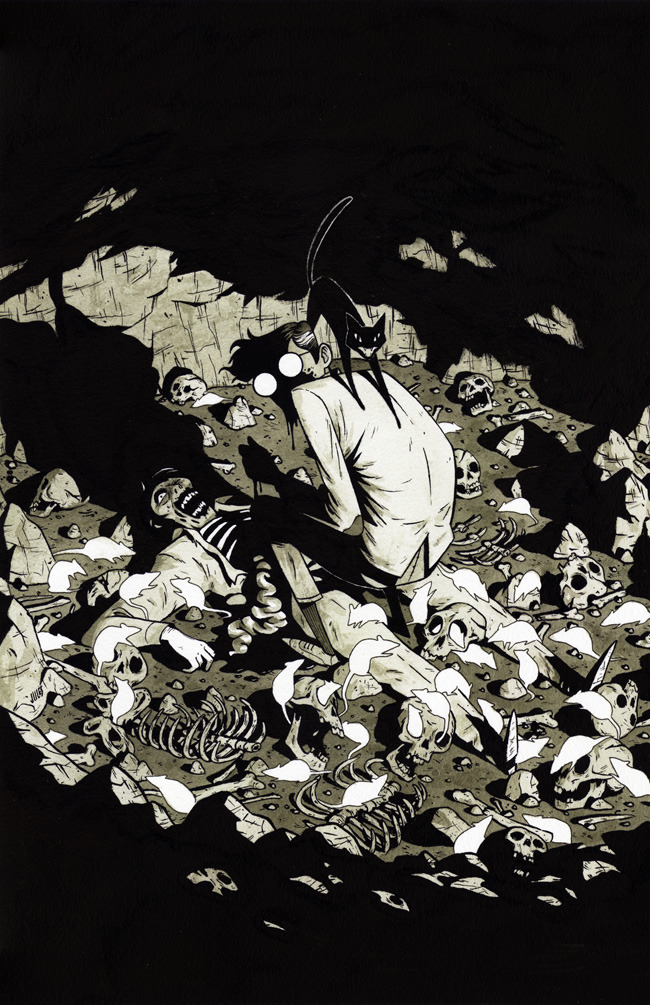

AncientH:
Also, in a weird crux of nerddom, they made Erich Zann a violist. Now, Lovecraft does call Zann's instrument a viol, but that's because HPL thought it was shorthand for violin, and none of the action actually describes how Zann playing it, so to this day, people still argue over which fucking instrument Zann was playing.

Violin.

Viol.
A Mythos Grimoire

Or any other magic book image that suits your fancy.
FrankT:
Wait, didn't we already have a section or three on Mythos books? Well, this is actually about casting spells. Wait, didn't we already have a couple of those already too? Yeah. I have actually lost count of how many separate sections the editor has seen fit to hide various portions of the rules for magic in this game. This particular section is 28 pages long and can probably eat all the other sections. It's also probably the most important, because it's the one that actually tells you what some of the spells do. The fact that pretty much nothing in this book is where you'd think it should be, or attached to other rules of its kind gives the entire reading a somewhat surreal vibe.

Japan has an entire genre of young women with meat on their heads being chased by komodo dragons.
AncientH:
Calling what Call of Cthulhu uses a "magic system" is actually a bit inaccurate. There is no system. There are no spell levels, casting times, level effects, uniform effects, save DCs, consistent format for presenting the spells or any of that. What they are is a grab bag of effects, some of which overlap, all hanging under the loose title "spells."
There's two good reasons for this. The first is that Lovecraft never had a strongly developed idea of any sort of magical system underlying his works, and all the other Mythos writers pretty much went their own way about it. If you wanted to actually categorize these into something recognizable as an RPG system, you'd have to do it after the fact...and, well, they basically chose not to do that. The best you can say about imposing any sort of organization is that they identified several families of similar spells and looped them into loose groupings under common nomenclature...which is why have Summon/Bind <insert Mythos entity here> spells, and Contact <Mythos Deity> spells, and Gate...but that's really as far as it went.
The second reason that spells are the unmitigated clusterfuck that they are is that it's a direct result of the kind of play that the game encouraged. If you think about, the level-based spell system fits D&D (somewhat) because it's a level-based game where characters are segregated by their abilities and increase in power hierarchically; magic is restricted to certain character classes, and more powerful magic is restricted to the higher levels of those classes, which works fine in the context of D&D - but not in the context of Lovecraftian horror, where you want people to stumble across and old book and casually read out some ancient burst of Latinitis and bad shit happens.

So, I'm actually okay with there being a democratic spell selection, where potentially anyone can be a (admittedly crappy) wizard as needs and resources dictate. What I dislike is that there's...no alternatives presented in this book. Okay, fine, plenty of people like playing a game where you find the tome and hope it has the spell you need, but there are other games where maybe you want a big spellbook under the player character's control that might have the spell they need to tackle the monster of the week, or the character is an occultist that actually knows more than you can get by browsing Thelema articles on the internet over your lunch hour. Those types of play aren't ever really addressed in CoC (spin-off games, yes; hell Catthulhu lets player cats who are familiars start off with a spell or two if they pay for it), and because of that there's basically been no evolutionary pressure to reformat or improve the spell system...ever. It's part of the reason why Earthdawn's effort to merge D&D and CoC casting resulted in the weird clusterfuck that is grimoire casting.
So these spells, here, are far from the only spells in Call of Cthulhu - there are entire books filled with other spells. But they don't incorporate them into the main book. Even in Call of Cthulhu d20 they mostly kept these exact same spells. I'm not saying that the same spells are in every fucking edition. But most. It's the Peter Pan of games, refusing to grow up an inch.
FrankT:
Spells are all supposed to be brain breaking things, but not all of them cost sanity. A lot more of them hurt your brain than appeared to in the stories, but that is a conscious design choice. Still, you can go full on Marsh clan and use magic to fill your nets with the bounty of the sea and nothing bad will happen to you. On the other hand, a lot of spells set you back 2D6 Sanity or more every time you cast them, which is just kind of nuts. Such spells are generally not things that PCs can use.
In case you were wondering, the organization of these spells is nutty. Possibly non-existent. There are sublists for spells of certain categories such as contact spells or binding spells. There is also a miscellaneous spells section at the front, and there are some binding spells in it, because go fuck yourself. Actually, I'm wrong. The spells are claimed to be in sections in the table of contents, but actually that's a lie and it's just a big alphabetical list and everything is a big miscellaneous pile unsorted by other means. Silly me.
AncientH:
A lot of this stuff doesn't even make sense in context of the fiction; it's one of those sub-parts of the game that sort of took on a life of its own, so even if you might only see one or two spells per game, there's dozens to choose from and interact with each other.
Unlike D&D which has always had something of a complicated relationship between spells and enchanting, CoC just straight up has spells that brew space drugs and enchant magic daggers and shit. Which sounds cool, but in practice it means each magical item has a unique spell that goes along with it. So while stuff like Brew Space Mead looks kind of workable compared to AD&D 2 and enchant an item and permanency, it's still a long and muddled way from item creation in D&D3 or Shadowrun 1st edition.
FrankT:
A number of spells deal with extremely large distances. As such, there is a chart to tell you how far away Sirius and Pluto are. They are, in fact, very far away.

Why you might want to open a gate to a location in Galaxy M31 is left as an exercise for the reader, but it does give you an amount of magic points you'd have to spend to do that. As it happens, you'd want to do that because that is where The Planet of the Dead is in some Clark Ashton Smith material. I'm not sure if that's conventionally considered to be canon or not, but if you care, the Gate Creation & Travel Costs chart has you covered.
AncientH:
A lot of the spells are really more just plot devices than anything else. So some have complicated little sub-rules for resolving mental conflict or draining attribute points, and some talk about how you need ten people to do the chant but they don't all need to know the spell (except when they do). There's no real effort to make spells straightforward and easy because, frankly, the expectation is that spells aren't going to be prolific or straightforward. Your entire career as an investigator could earn you the nickname of "Wizard" for having the Bind Loup-Garou and Command Porpoise spells, even if you never encountered either of those.
There are also some signs - curiously kept between editions - that the writers weren't exactly keeping track of what spells exist. So for example, there's a pointer at "Call Fish" to the spell "Attract Fish," because some asshole twenty years ago wrote "Call Fish" while writing down some character's spells and everyone else just kept the gloss.
FrankT:
Many of the spells are incredibly specific and presumably came directly out of a story. Some of those stories are not HP Lovecraft stories, but later works by other authors. Some of those later works are actually adventures written for this game, so good luck tracking this shit down. So for example, there's a whole chain of spells that curse a set of pipes made from owl bones that then create haunting melodies that drive men mad. So... if you wanted to drive men mad and you had a set of pipes made out of owl bones, and you had the ability to learn all the spells in that chain, you could do that. This is so amazingly specific and limited in scope that I can only assume it's the conversion of an exact set of events that happened in a story somewhere. And I have no idea where it's from.
The book also helpfully notes which spells are “Voodoo,” but I'm at a loss to figure out why that would matter. If you image search voodoo, you get a lot of tits. Which is fine, but I guess we'll finally end this chapter on a SFW note.
AncientH:
I'm going to end this talking about one of the most famous spells, a defensive ward called the Elder Sign! This is supposed to be a kinda-sorta sovereign protection against various Mythos beasties, even though different people have very different ideas about it was supposed to look like. For example, in "The Shadow over Innsmouth" Lovecraft described it as a common good-luck charm of the era - a swastika.

...and in At the Mountains of Madness and some letters it's a kind of tree-like thing...

...and finally, when August Derleth (and later Chaosium) got ahold of it, it looked like a funky pentagram:

...and should at all costs not be mistaken from the sigil on the cover of the Simonomicon, as created by Khem Caigan:
Anyway, ignore any thoughts you might have about the Elder Sign being some sort of magic circle against the Mythos - it doesn't work like that. If you tattoo it on you, it'll only protect a few inches of skin that it's tattooed on. This was done specifically to fuck with players who thought carving it into the tips of their silver bullets was the go-to way of handling the Mythos.
Last edited by Ancient History on Thu Aug 21, 2014 8:57 pm, edited 1 time in total.
Is it bad that one of the cool things about that picture is that she's not only playing CoC but also playing the L5R CCG, apparently? (Look at the cards. There's another game there whose cards seem familiar, but what game that is is escaping me right now.)Ancient History wrote:
But they got better!
World of Warcraft CCG too, apparently.
My 2 yen,
Akiosama
Last edited by Akiosama on Thu Aug 21, 2014 9:34 pm, edited 1 time in total.
- Ancient History
- Serious Badass
- Posts: 12708
- Joined: Wed Aug 18, 2010 12:57 pm
-
Username17
- Serious Badass
- Posts: 29894
- Joined: Fri Mar 07, 2008 7:54 pm
The leftmost one is a Legend of the Five Rings Diamond Edition character card.
Edit: I notice after writing that that Akiosama pointed that out. My bad.
Edit: I notice after writing that that Akiosama pointed that out. My bad.
Last edited by Laertes on Thu Aug 21, 2014 10:00 pm, edited 1 time in total.
